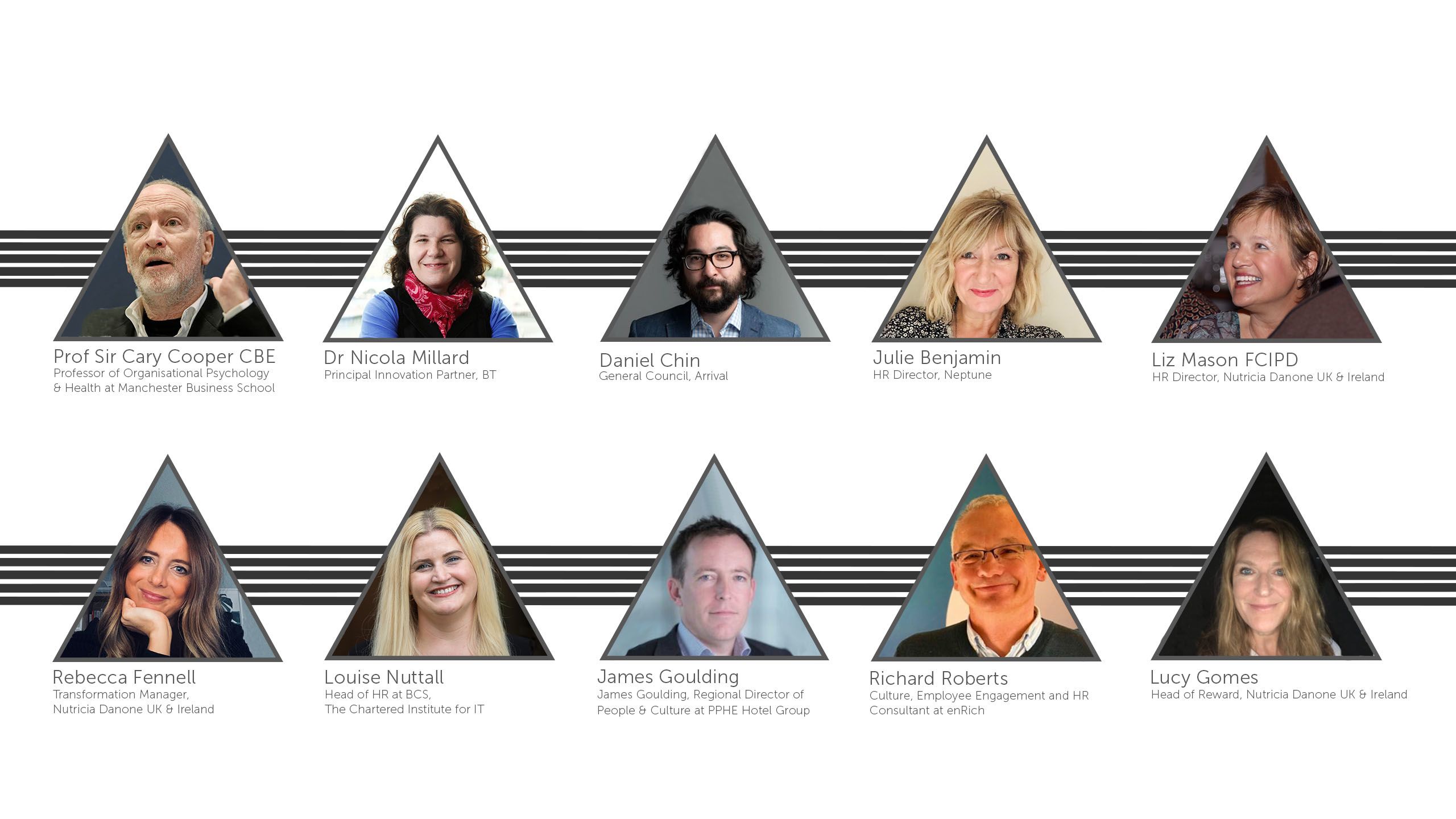
Any current discussion of management, HR or work in general is likely to feature the words “unprecedented”, “challenging”, “transformative” – or all of the above.
As employment lawyers, every day we talk to HR professionals and see – and deal with – the legal side of challenges that have emerged. This is why we have set out to unpack the changing dimensions of people management and take a close and honest look at the shifts in perceptions, behaviours and expectations of both employees and employers.
For this report, which forms the cornerstone of our “Workforce: changing dimensions” campaign, we have turned to HR directors and leading academics to ascertain what exactly has changed, what transformation is currently ongoing, and what’s next for the future of work and the HR profession.
HR’s role has risen in prominence as a direct result of dealing with the workforce crisis aspect of the pandemic, and HR professionals have risen to the challenge to demonstrate great resilience and creativity as they played a key role in keeping businesses going. Now is the time for reflection, and the time to focus on strategic planning to ensure that employers get the best out of their transformed workforces.
Our interviews have surfaced a multitude of themes. For this report, we have focused on the areas that matter most right now, from the ‘new baseline’ in the employer/employee relationship to the current challenges such as recruitment, strategic wellbeing, and hybrid working models. Beyond the immediate issues, we have also looked into the future and questioned where we, as employers and working population more generally, go from here.
We have hugely enjoyed getting insights from our contributors to whom we are immensely grateful. We hope you, in turn, enjoy this report and find it useful as you tackle strategic HR planning for your organisation.
For more thought leadership and a deeper dive into the themes we’ve uncovered in the course of producing this report, please take a look at our upcoming events and podcasts.
You can also download a printer friendly-version of this report.
- Malcolm Gregory, Partner & Head of Employment, Royds Withy King
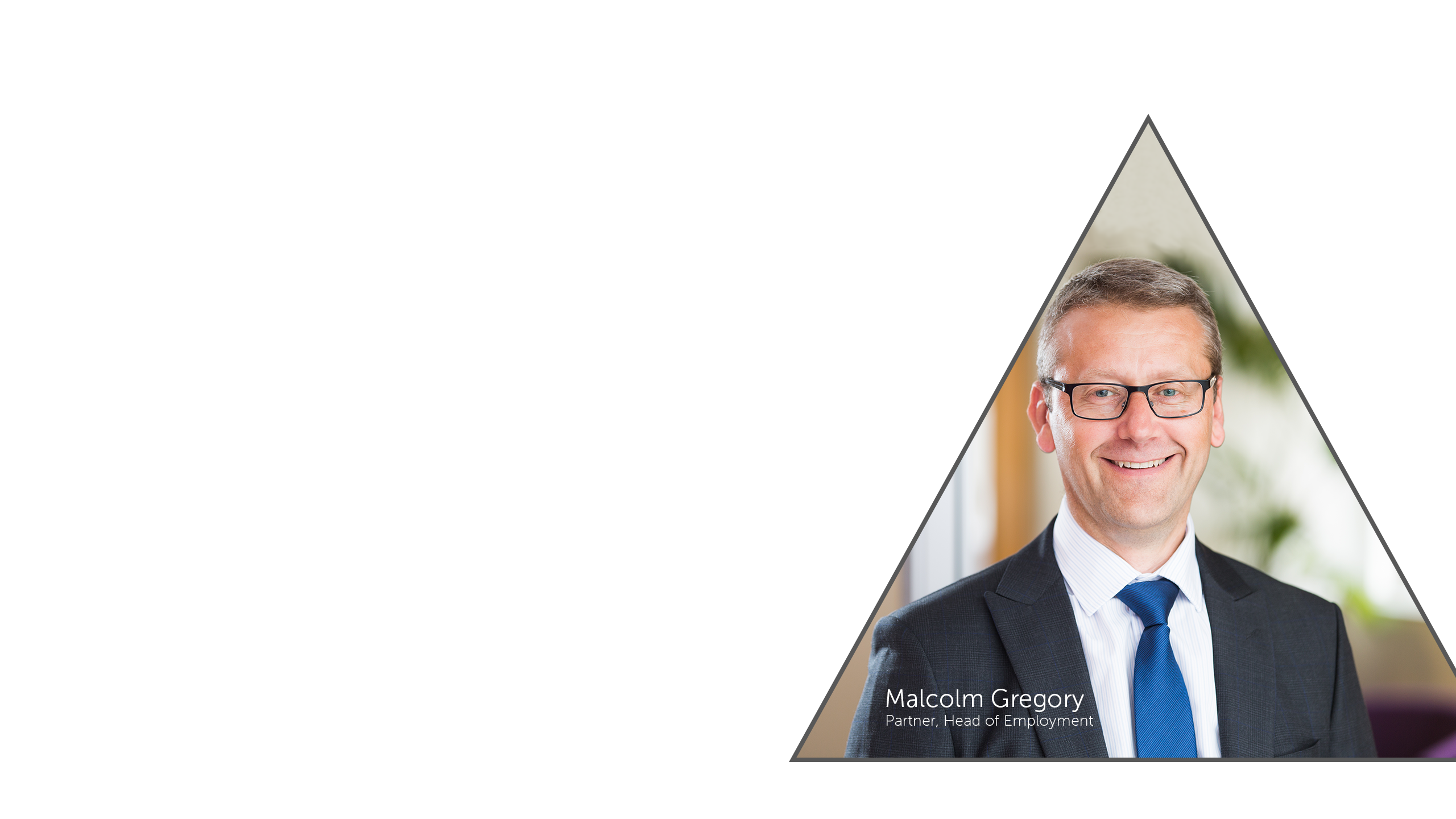

The last two years kick-started and accelerated many shifts in the perceptions, behaviours and expectations of both employees and employers.
Some changes have been sudden and drastic; others more subtle and emerging over the course of months. While the shifts are still ongoing, it is a good time to take stock and appreciate the new environments and relationships employers and employees have forged. In order to determine the ‘new baseline’, we spoke to a number of senior HR professionals and academics studying people management. In this chapter, we explore their views as to how employees’ expectations have changed.
The communication expectation
HR professionals have learned valuable lessons about communicating with people. Already high on the agenda, communication shot up in importance at a time when staff turned to management for guidance and advice.
Communicating early and often has been key. “As we went along, we learned that it was better to get something out there even if it’s just a holding statement so employees know that, as an employer, we are considering something or working on a strategy and that we are going to tell shortly even if we cannot tell them right away”, says Daniel Chin, General Counsel at Arrival.
When faced with an unprecedented crisis, employers used multiple channels to provide updates, for example internal chats, email and Zoom ‘war rooms’ with management. This communication transparency worked both ways. Daniel elaborates: “We made it easier for employees to communicate with us by setting up a dedicated email address and nominating responsible individuals. We’ve made two-way communication a very visible part of what we do. I think I could say with full confidence that anyone in the company would know who to contact if they wanted information or they wanted to express a concern”.
At luxury furniture retailer Neptune, Julie Benjamin, HR Director, talks about how honest communication has helped forge a new alliance between staff and management and break down barriers. Neptune, like many other employers, reacted to the communication challenge by introducing daily ‘war room’ meetings. These meetings, open to anyone who needed to be on the call rather than just management, broke through the traditional hierarchy and helped to remove barriers to communication throughout the organisation.
“On a practical level, if you want to deliver change in your business, go and talk to people. Don’t design a 96-step process; just go and talk and see how people feel. Now that Neptune has broken through those barriers, there’s more trust on both sides and much less suspicion, because we have, on occasion, seen each other at our worst.”
This informal, open style of communication can be seen as a positive consequence of the pandemic one of which employers are keen to preserve in order to help them achieve agile change on future projects.
“There has been a change in tone. Now when we engage with employees on companywide issues, the tone that is adopted is a lot more human.”
The employee voice expectation
Hand in hand with the communication expectation comes the expectation that employees will have a say in their company’s decisions. Rebecca Fennell, Transformation Manager at Danone UK & Ireland, explains: “Our employees want more communication, more honesty, more transparency. We’ve been through a huge change in the last 12 months and what we’ve found is they just want to know what’s going on”.
“It doesn’t matter what news we’ve got to share, whether it’s positive or challenging, our employees want to know the truth and be in the loop, and they want to have a share of a voice in what’s going on as much as possible”.
Julie Benjamin, HR Director, Neptune agrees: “Twenty years ago, employees used the union as the big stick. It was the collective – and quite aggressive – confrontational voice against the employer”. What we are seeing now is more collaborative. The crisis has given a more humanising and engaging requirement for the employees and the business to speak to each other that wasn’t there before. The resulting “all for one” spirit has accelerated the change dynamic. Now that everyone’s experienced it, they don’t want to go back.
“It’s a different paradigm. It shifted dramatically over the last two years, because management and staff have been in the trenches together.”
Employers have had to come up with engaging ways to receive feedback. Liz Mason, HR Director at Nutricia Danone UK & Ireland, says: “We’ve got our ‘Pulse’ surveys which are done every couple of months; we’ve got our annual surveys; we’ve got forums, we’ve got questionnaires; you name it - we’ve got it. What we have found though is the take-up and the engagement around surveys drops as people get ‘survey fatigue’. So over the last 12 months we’ve done a lot more focus group initiatives. When we want to enquire about our culture and the direction we are taking it, we’ve done it in smaller work group sessions and focus groups, and we’ve found those really meaningful".
At PPHE Hotel Group, the HR team has been revamping its communications approach to be more ‘bottom up’. Employee forums have been reconstituted and re-energised; the group has created quarterly national meetings with reps from different hotel teams, the HR director and the UK VP of Operations; surveying is being assessed and re-designed. The timeliness of employee feedback has emerged as a significant factor. James Goulding, Regional Director of People & Culture at PPHE Hotel Group, comments: “We would have adopted all these measures anyway; however, Brexit and Covid have done a lot to accelerate labour market issues. The need for more ‘real time’ information and agile decision-making on people issues has become a real driver; the typical annual survey is no longer as relevant as it used to be”.
Health, safety and wellbeing expectation
Caring for employees has taken on a whole new meaning over the last couple of years. In the words of Arrival’s Daniel Chin, employees deserve to have a company that looks after them and thinks about their health.
Arrival topped LinkedIn’s UK Startup list in October 2020. The company attributes this success to their efforts to build a culture that people want to be part of and takes employees’ expectations in the health and safety space very seriously. Daniel explains, “A few years ago, if you were to ask what employees expect from their employer, working in a safe environment probably wouldn’t be on anybody’s list unless they worked in a very dangerous industry. But now, even office workers have that as a baseline expectation”.
This may not be the last pandemic we go through. There is a natural expectation that the employer knows what they are doing, and the onus is very much on them to have their ‘ducks in a row’, to build contingency plans and anticipate changes. Employers like Arrival put playbooks in place to spell out what measures they could introduce in the event another public health crisis arises.
The employees also deserve to have an employer that looks after them and thinks about their mental health and wellbeing.
While employee wellbeing has been on many employers’ agendas for a while, the thinking and the need for action in this space has crystallised much more. Until more recently, steps that many employers took were ad hoc (for example, offering massages at work, appointing mental health first aiders and so on) In the last couple of years, organisations have had to determine what wellbeing at work means.
“Giving more consideration to an employee’s whole wellbeing, mental and physical, is something that we’re not only very keen to do, but are getting ‘pushed’ by our employees to take very seriously”.
The homeworking expectation
It’s impossible to talk about the last two years without mentioning home working, hybrid working, or some other form of flexible working.
“People wanted flexible working pre-Covid. All the evidence was there a decade before, and most organisations had flexible working arrangements available. However, people didn’t feel they could ask for those because it would show a lack of commitment”.
Louise Nuttall, Head of HR at BCS, The Chartered Institute for IT, comments: “Homeworking that happened as a result of the pandemic opened people’s eyes into the art of the possible and ways of working that simply weren’t there before. The increased trust and flexibility - definitely going both ways – has been one definitive shift”.
It’s certainly been a challenge for managers who have had to get comfortable with relinquishing a lot of control. Overall though, the ‘new normal’ expectation, both for the existing workforce and for new recruits, has shifted from “of course I’ll work from the office” to “I am not expected to be in the office”.
The recognition expectation
The pandemic was a pivotal moment for many. Health concerns, life in lockdowns and, for many families, grief, have changed outlook on life for many, and that included attitudes to work. In Daniel Chin’s words, “employees are looking at what they want from life, and realising that money is only part of the equation more than ever before. It’s had an obvious effect on recruitment: the trend is for people to seek jobs where they can either get more work/life balance or do something they are more interested in”.
Within existing workforces, this has manifested in staff wanting more recognition for what they do, and this time, it’s people in junior roles who are speaking up.
Julie Benjamin, HR Director, Neptune comments: “Yes, that does include pay increases, but goes beyond that. It is a recognition of why our business has been so successful over the last two years. It’s down to our staff: they kept turning up, and they did so with enthusiasm and commitment. As a result, there’s more recognition throughout the organisation of the value that sits in the front line and junior roles. A couple of years ago some of those people may have felt that they were replaceable, just small cogs in a machine. Now they can - rightly - say to the employer, “now you know how important I am; I am one of the people that kept the company afloat”.
This shift in perception of value has happened on both sides. Whereas before, management would apply pay increases to the whole organisation with likely more investment at the top, the pyramid is now inverted and many employers focus their investment at the bottom of the organisation.
The new dimensions
All of these new –or at the very least, enhanced – expectations create a new terrain for people management. With the very dimensions of people management changed so dramatically, HR professionals have been learning new approaches to issues that have become more prominent due to current pressures. In our next chapters, we explore how the new baseline has been underscoring the challenges HR faces, including recruitment and retention, wellbeing and flexible working.

The last two years kick-started and accelerated many shifts in the perceptions, behaviours and expectations of both employees and employers.
Some changes have been sudden and drastic; others more subtle and emerging over the course of months. While the shifts are still ongoing, it is a good time to take stock and appreciate the new environments and relationships employers and employees have forged. In order to determine the ‘new baseline’, we spoke to a number of senior HR professionals and academics studying people management. In this chapter, we explore their views as to how employees’ expectations have changed.
The communication expectation
HR professionals have learned valuable lessons about communicating with people. Already high on the agenda, communication shot up in importance at a time when staff turned to management for guidance and advice.
Communicating early and often has been key. “As we went along, we learned that it was better to get something out there even if it’s just a holding statement so employees know that, as an employer, we are considering something or working on a strategy and that we are going to tell shortly even if we cannot tell them right away”, says Daniel Chin, General Counsel of Arrival.
When faced with an unprecedented crisis, employers used multiple channels to provide updates, for example internal chats, email and Zoom ‘war rooms’ with management. This communication transparency worked both ways. Daniel elaborates: “We made it easier for employees to communicate with us by setting up a dedicated email address and nominating responsible individuals. We’ve made two-way communication a very visible part of what we do. I think I could say with full confidence that anyone in the company would know who to contact if they wanted information or they wanted to express a concern”.
At luxury furniture retailer Neptune, HR Director, Julie Benjamin talks about how honest communication has helped forge a new alliance between staff and management and break down barriers. Neptune, like many other employers, reacted to the communication challenge by introducing daily ‘war room’ meetings. These meetings, open to anyone who needed to be on the call rather than just management, broke through the traditional hierarchy and helped to remove barriers to communication throughout the organisation.
“On a practical level, if you want to deliver change in your business, go and talk to people. Don’t design a 96-step process; just go and talk and see how people feel. Now that Neptune has broken through those barriers, there’s more trust on both sides and much less suspicion, because we have, on occasion, seen each other at our worst.”
This informal, open style of communication can be seen as a positive consequence of the pandemic one of which employers are keen to preserve in order to help them achieve agile change on future projects.
“There has been a change in tone. Now when we engage with employees on companywide issues, the tone that is adopted is a lot more human.”
The employee voice expectation
Hand in hand with the communication expectation comes the expectation that employees will have a say in their company’s decisions. Rebecca Fennell, Transformation Manager at Danone UK & Ireland, explains: “Our employees want more communication, more honesty, more transparency. We’ve been through a huge change in the last 12 months and what we’ve found is they just want to know what’s going on”.
“It doesn’t matter what news we’ve got to share, whether it’s positive or challenging, our employees want to know the truth and be in the loop, and they want to have a share of a voice in what’s going on as much as possible”.
Julie Benjamin, HR Director, Neptune agrees: “Twenty years ago, employees used the union as the big stick. It was the collective – and quite aggressive – confrontational voice against the employer”. What we are seeing now is more collaborative. The crisis has given a more humanising and engaging requirement for the employees and the business to speak to each other that wasn’t there before. The resulting “all for one” spirit has accelerated the change dynamic. Now that everyone’s experienced it, they don’t want to go back.
“It’s a different paradigm. It shifted dramatically over the last two years, because management and staff have been in the trenches together.”
Employers have had to come up with engaging ways to receive feedback. Liz Mason, HR Director at Nutricia Danone UK & Ireland, says: “We’ve got our ‘Pulse’ surveys which are done every couple of months; we’ve got our annual surveys; we’ve got forums, we’ve got questionnaires; you name it - we’ve got it. What we have found though is the take-up and the engagement around surveys drops as people get ‘survey fatigue’. So over the last 12 months we’ve done a lot more focus group initiatives. When we want to enquire about our culture and the direction we are taking it, we’ve done it in smaller work group sessions and focus groups, and we’ve found those really meaningful".
At PPHE Hotel Group, the HR team has been revamping its communications approach to be more ‘bottom up’. Employee forums have been reconstituted and re-energised; the group has created quarterly national meetings with reps from different hotel teams, the HR director and the UK VP of Operations; surveying is being assessed and re-designed. The timeliness of employee feedback has emerged as a significant factor. James Goulding, Regional Director of People & Culture at PPHE Hotel Group, comments: “We would have adopted all these measures anyway; however, Brexit and Covid have done a lot to accelerate labour market issues. The need for more ‘real time’ information and agile decision-making on people issues has become a real driver; the typical annual survey is no longer as relevant as it used to be”.
Health, safety and wellbeing expectation
Caring for employees has taken on a whole new meaning over the last couple of years. In the words of Arrival’s Daniel Chin, employees deserve to have a company that looks after them and thinks about their health.
Arrival topped LinkedIn’s UK Startup list in October 2020. The company attributes this success to their efforts to build a culture that people want to be part of and takes employees’ expectations in the health and safety space very seriously. Daniel explains, “A few years ago, if you were to ask what employees expect from their employer, working in a safe environment probably wouldn’t be on anybody’s list unless they worked in a very dangerous industry. But now, even office workers have that as a baseline expectation”.
This may not be the last pandemic we go through. There is a natural expectation that the employer knows what they are doing, and the onus is very much on them to have their ‘ducks in a row’, to build contingency plans and anticipate changes. Employers like Arrival put playbooks in place to spell out what measures they could introduce in the event another public health crisis arises.
The employees also deserve to have an employer that looks after them and thinks about their mental health and wellbeing.
While employee wellbeing has been on many employers’ agendas for a while, the thinking and the need for action in this space has crystallised much more. Until more recently, steps that many employers took were ad hoc (for example, offering massages at work, appointing mental health first aiders and so on) In the last couple of years, organisations have had to determine what wellbeing at work means.
“Giving more consideration to an employee’s whole wellbeing, mental and physical, is something that we’re not only very keen to do, but are getting ‘pushed’ by our employees to take very seriously”.
The homeworking expectation
It’s impossible to talk about the last two years without mentioning home working, hybrid working, or some other form of flexible working.
“People wanted flexible working pre-Covid. All the evidence was there a decade before, and most organisations had flexible working arrangements available. However, people didn’t feel they could ask for those because it would show a lack of commitment”.
Louise Nuttall, Head of HR at BCS, The Chartered Institute for IT, comments: “Homeworking that happened as a result of the pandemic opened people’s eyes into the art of the possible and ways of working that simply weren’t there before. The increased trust and flexibility - definitely going both ways – has been one definitive shift”.
It’s certainly been a challenge for managers who have had to get comfortable with relinquishing a lot of control. Overall though, the ‘new normal’ expectation, both for the existing workforce and for new recruits, has shifted from “of course I’ll work from the office” to “I am not expected to be in the office”.
The recognition expectation
The pandemic was a pivotal moment for many. Health concerns, life in lockdowns and, for many families, grief, have changed outlook on life for many, and that included attitudes to work. In Daniel Chin’s words, “employees are looking at what they want from life, and realising that money is only part of the equation more than ever before. It’s had an obvious effect on recruitment: the trend is for people to seek jobs where they can either get more work/life balance or do something they are more interested in”.
Within existing workforces, this has manifested in staff wanting more recognition for what they do, and this time, it’s people in junior roles who are speaking up.
Julie Benjamin, HR Director, Neptune comments: “Yes, that does include pay increases, but goes beyond that. It is a recognition of why our business has been so successful over the last two years. It’s down to our staff: they kept turning up, and they did so with enthusiasm and commitment. As a result, there’s more recognition throughout the organisation of the value that sits in the front line and junior roles. A couple of years ago some of those people may have felt that they were replaceable, just small cogs in a machine. Now they can - rightly - say to the employer, “now you know how important I am; I am one of the people that kept the company afloat”.
This shift in perception of value has happened on both sides. Whereas before, management would apply pay increases to the whole organisation with likely more investment at the top, the pyramid is now inverted and many employers focus their investment at the bottom of the organisation.
The new dimensions
All of these new –or at the very least, enhanced – expectations create a new terrain for people management. With the very dimensions of people management changed so dramatically, HR professionals have been learning new approaches to issues that have become more prominent due to current pressures. In our next chapters, we explore how the new baseline has been underscoring the challenges HR faces, including recruitment and retention, wellbeing and flexible working.

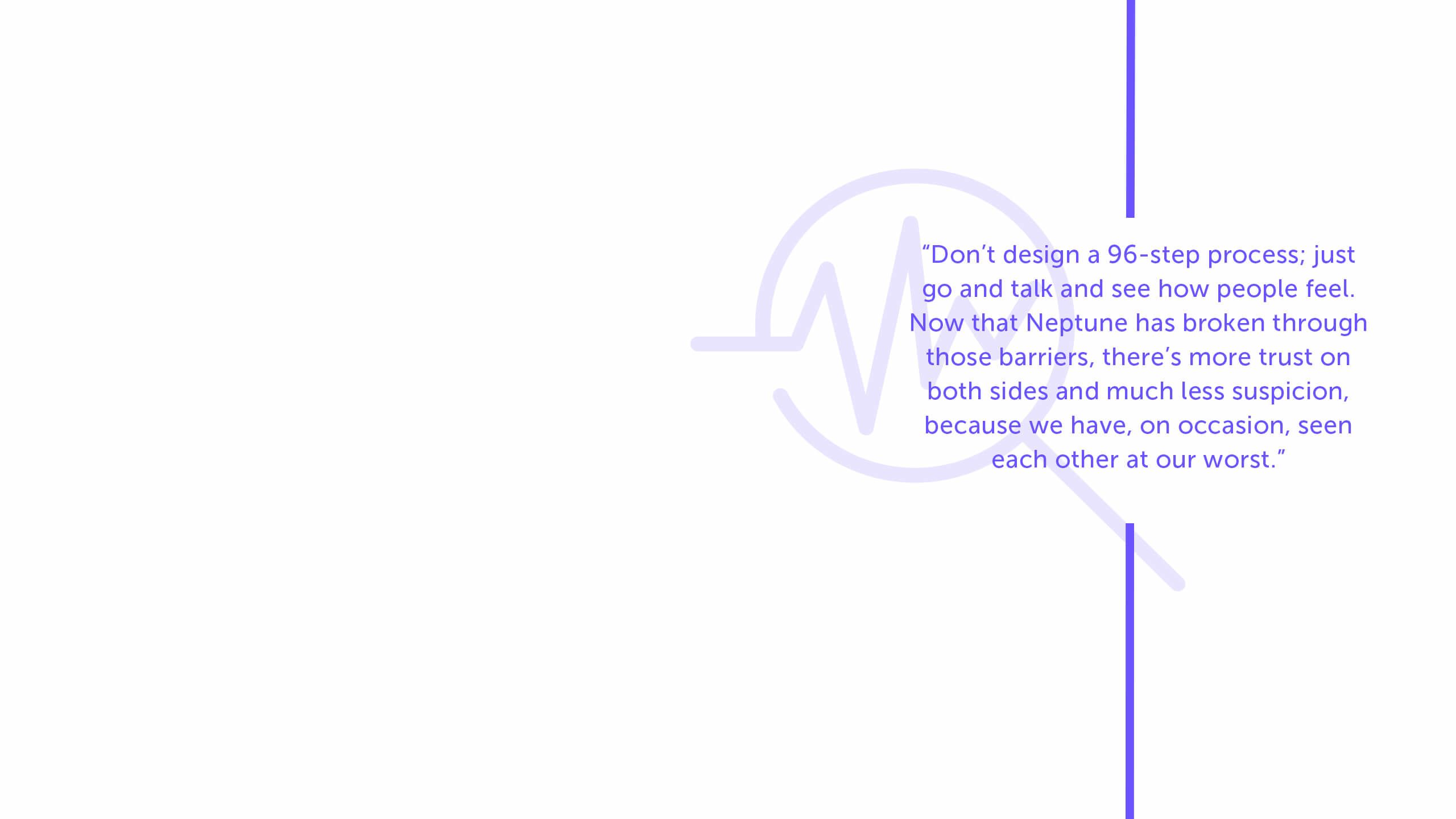
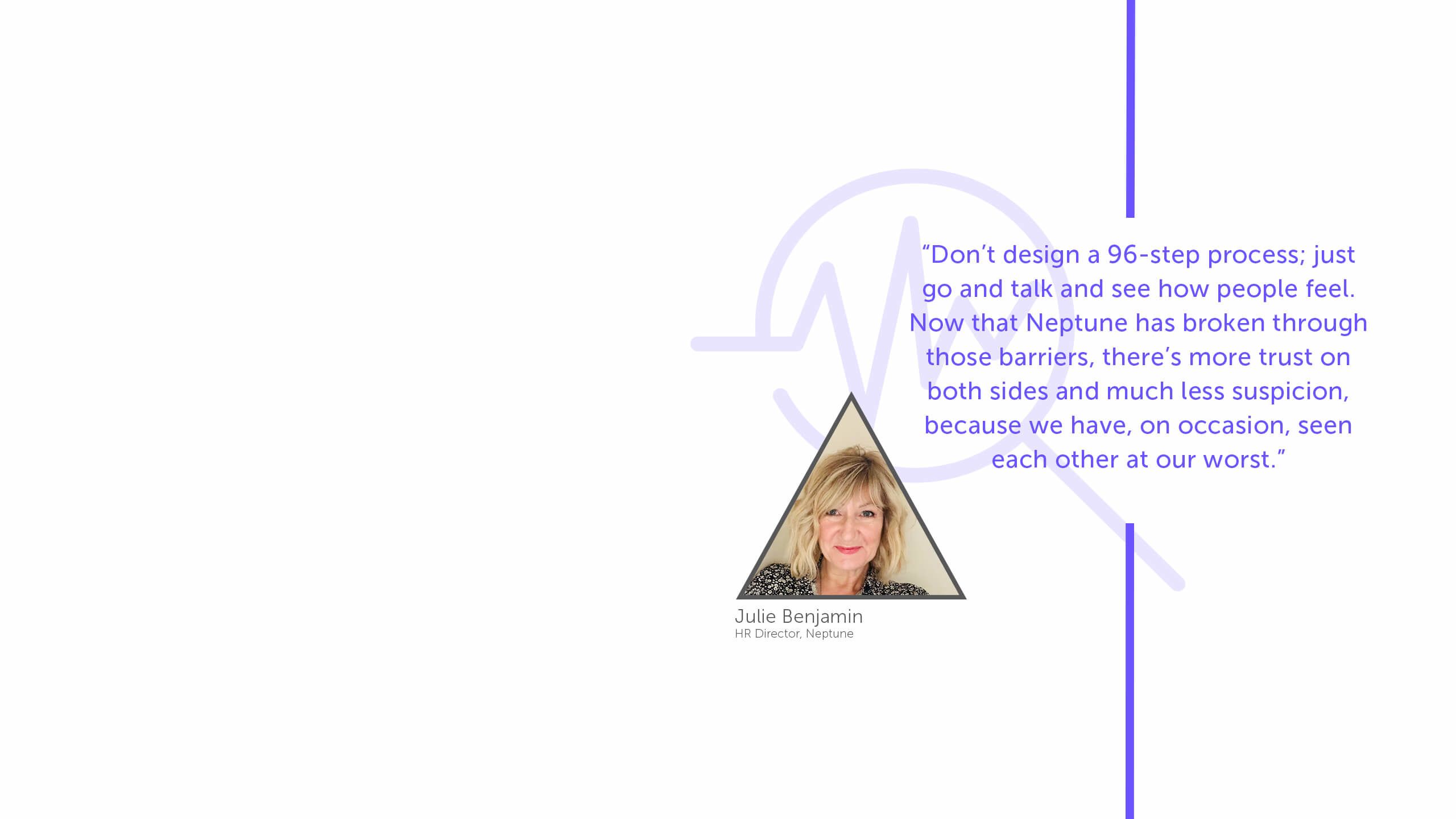

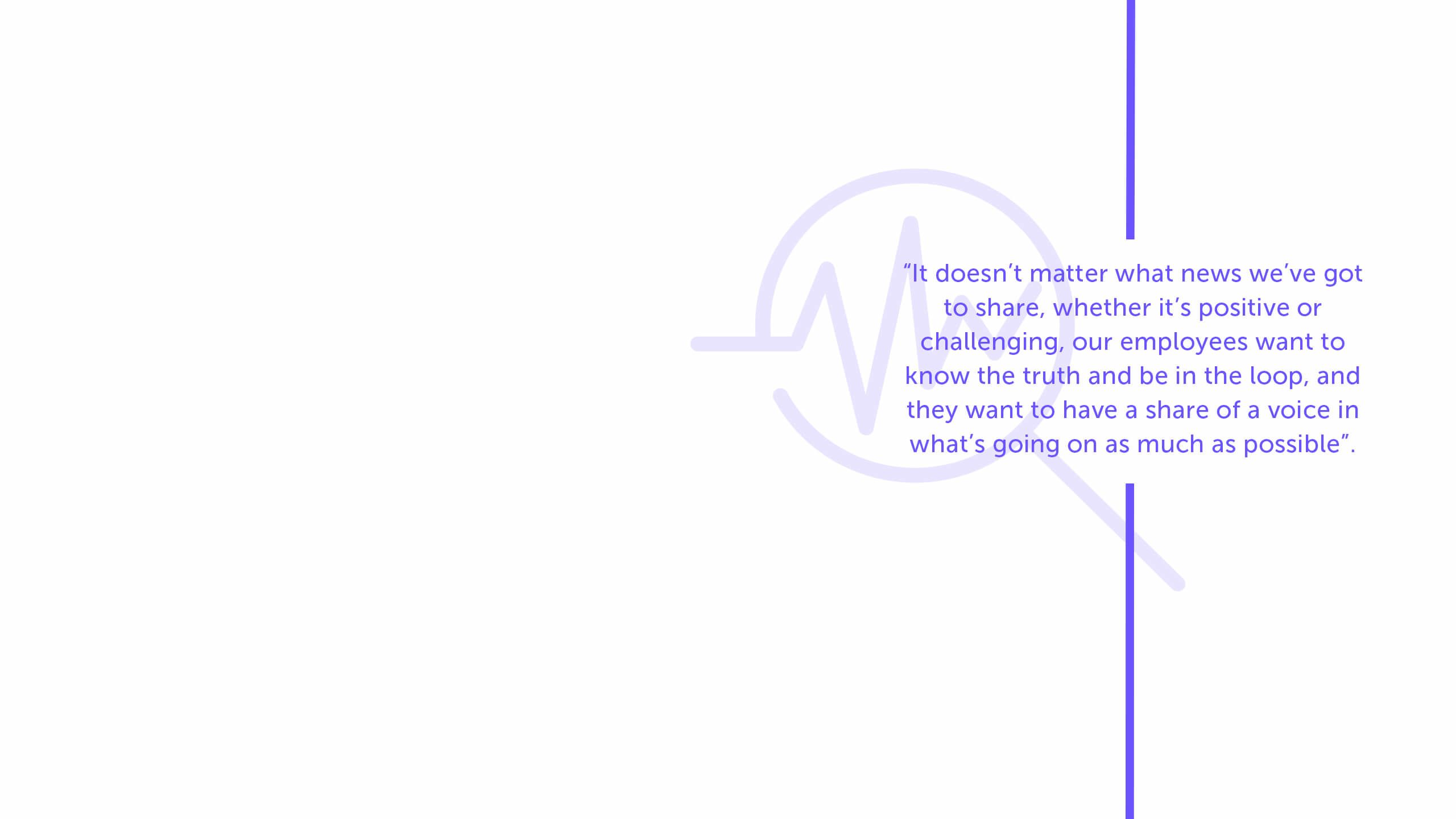
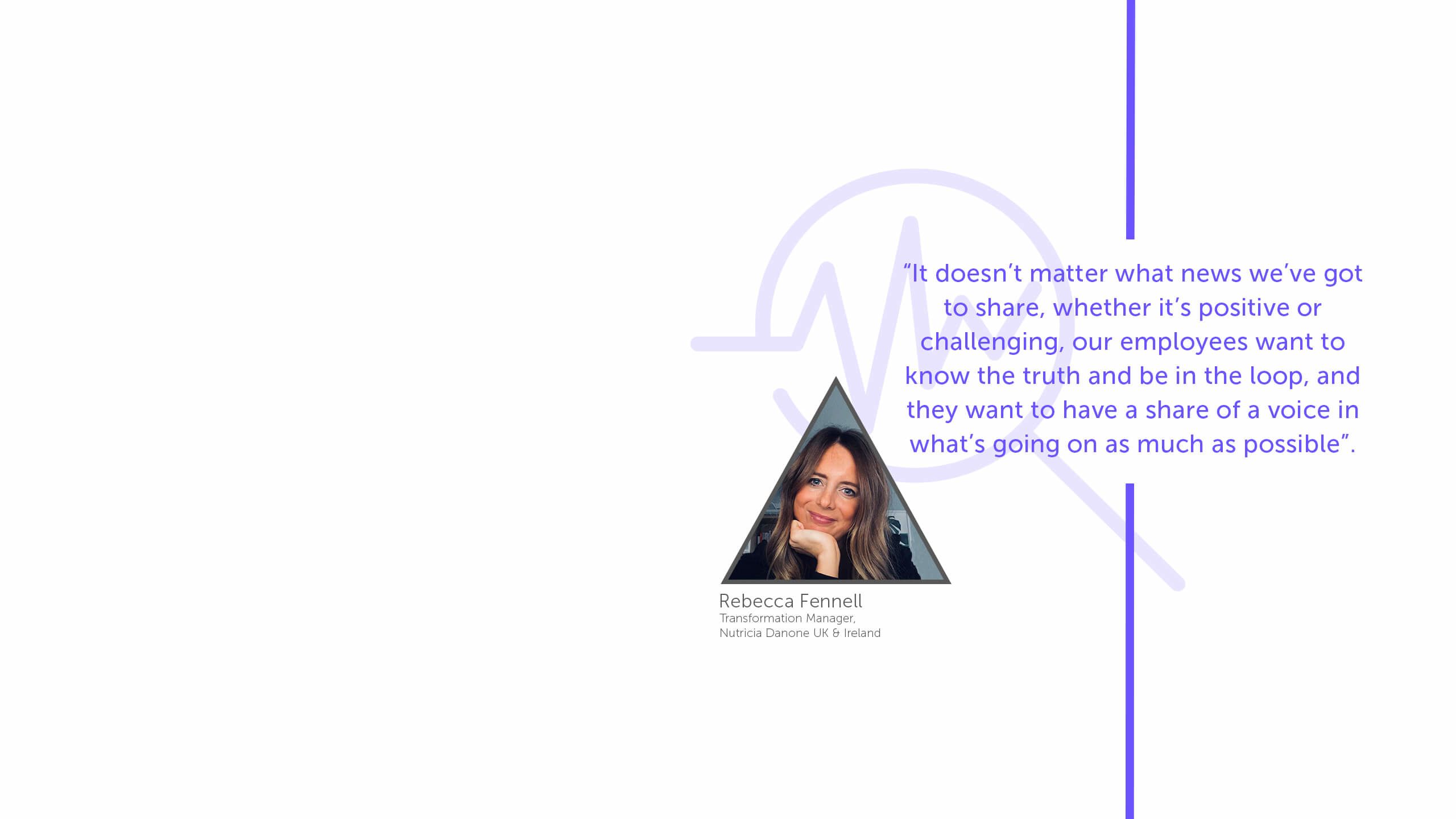

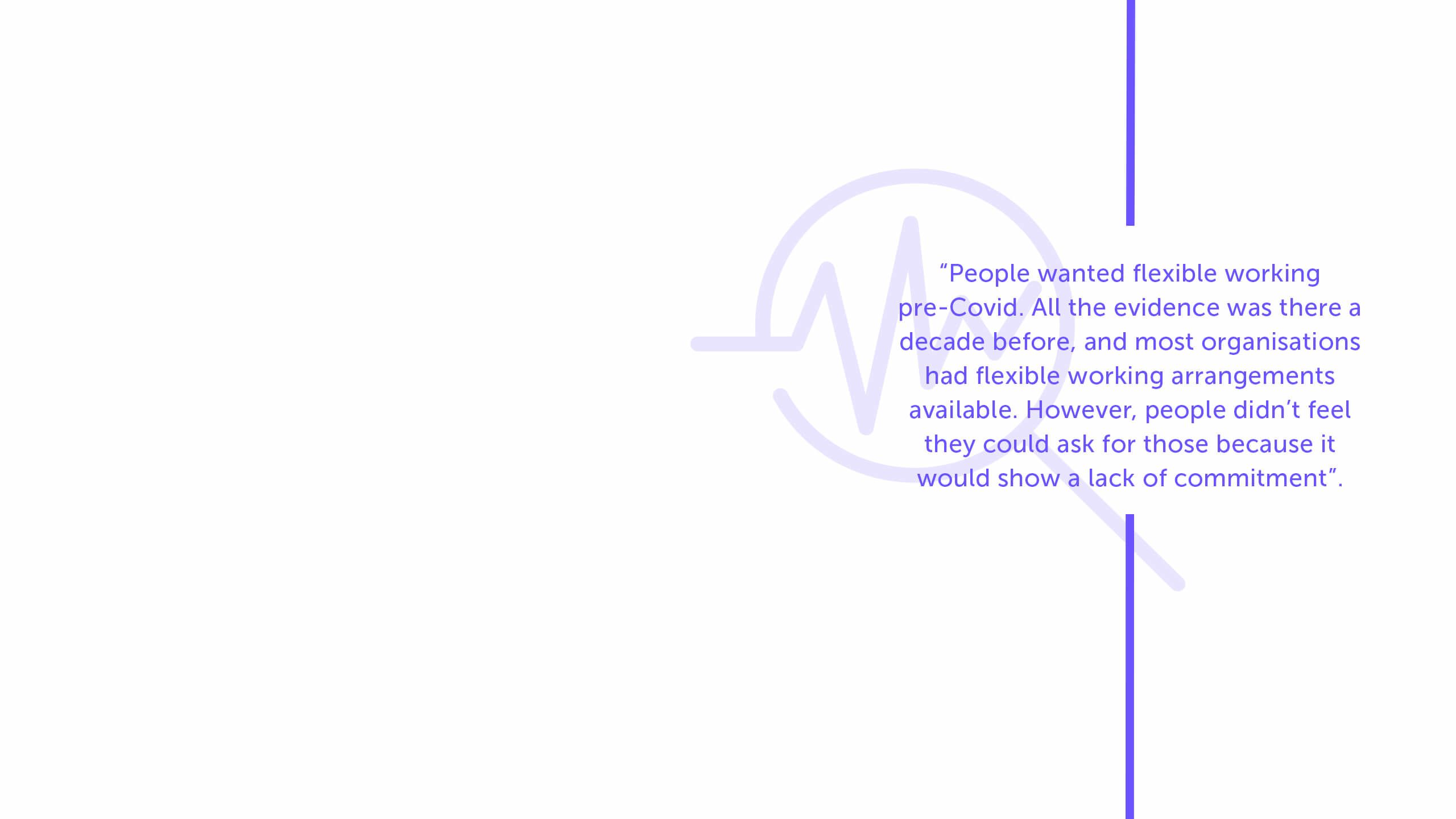
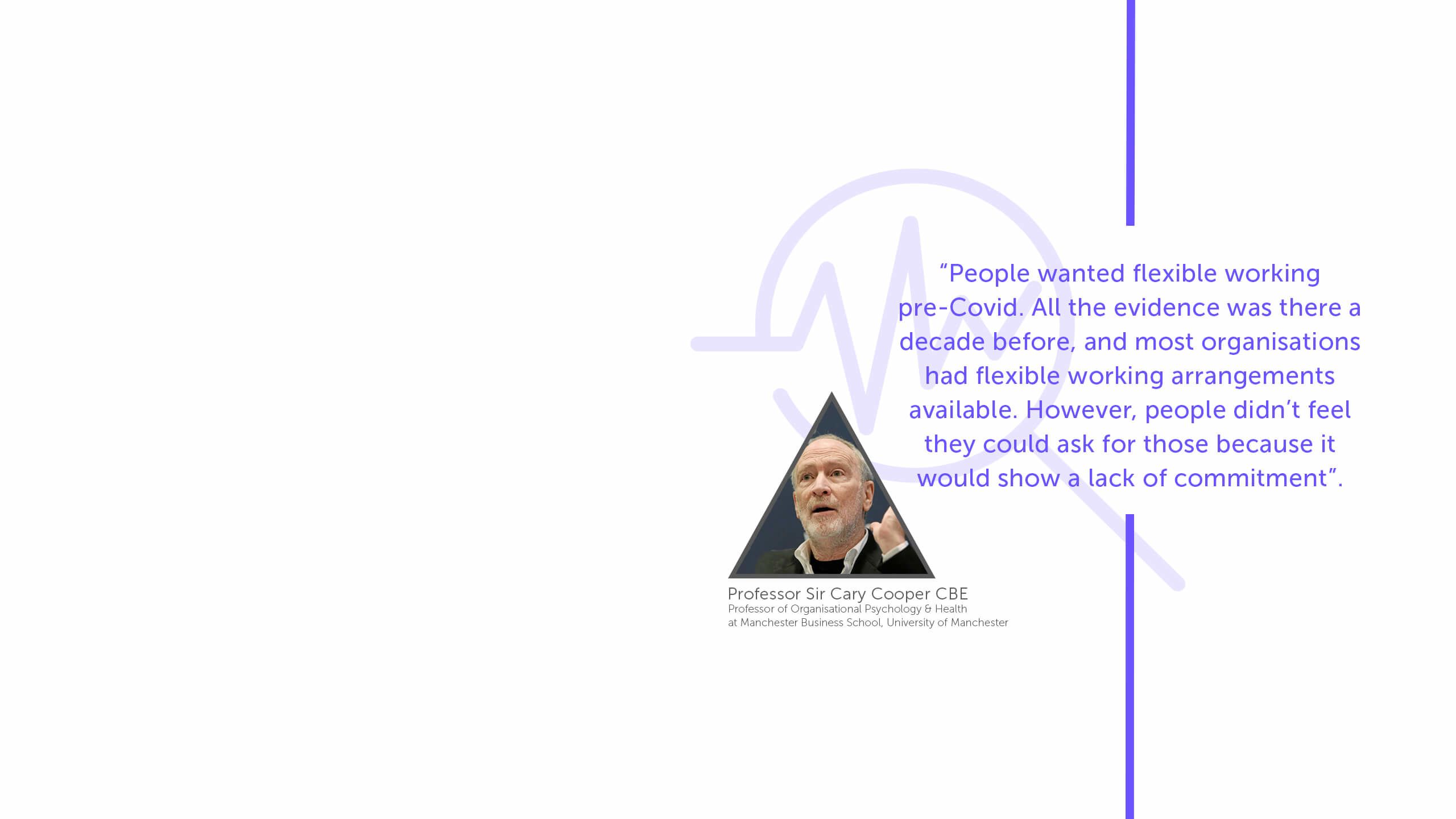


HR directors confirm: ‘the great resignation’ is real and not just a notion hyped up by media. It’s happening across the board and companies with typically good attrition rates have noticed it. Even the longest serving employees have been moving off to new pastures.
Similarly real are the talent shortages. Between November 2021 and January 2022 the number of job vacancies in the UK hit a record high of 1,298,400, although the ONS said that the rate of growth "continues to slow".
Some sectors, such as hospitality, have been severely affected by the twin effects of Covid and Brexit, and seen a dramatic tightening of the labour market. James Goulding, Regional Director of People & Culture at PPHE Hotel Group, comments: “The number of average applications per job has declined, and the candidate behaviour has changed very significantly. There’s been a lot of investment in recruiters, who now need to head hunt right down to entry level roles. That’s affected the interview process too, with managers needing to be brought on a journey to get them to understand this changed labour dynamic”.
In this precarious situation, what sort of expectations are talent teams getting from candidates?
With flexibility now a baseline expectation, it’s now key for employers to set out clear expectations from the outset, including in job adverts. Conversations with line managers at the point of recruitment must also include questions like: “What does the work set up look like for your new recruit? What is their minimum/maximum requirement in terms of time in the office? Where are they going to be based?”. Louise Nuttall, Head of HR at BCS, The Chartered Institute for IT comments: “It is important to set flexibility expectations for candidates early to avoid ambiguity and awkwardness down the line.”
Meaning, purpose and the employer brand
‘Meaning’ and ‘purpose’ are words that talent teams now use to describe what candidates seek in a job. The recruitment conversations are increasingly framed in terms of what differentiates organisations, and candidates question what the business does and whether it’s ethical or sustainable. Millennials and Gen Z candidates specifically are particularly focused on the social and environmental impact of organisations they are thinking of joining. They can be quite choiceful; they pay attention and note whether the credentials companies put forward are authentic or merely lip service.
“A lot of candidates - certainly more socially conscious ones - are attracted by our Danone commitments, and notably by our B Corp certification, which puts us in a good position as a prospective employer”.
Meaning, purpose and social conscience all got tested by the Covid pandemic, with employers who were able to inject meaning into people’s jobs during that tough time getting well-deserved praise. PPHE Hotel Group lent some of its employees to support St Thomas’ Hospitals; its chefs, security guards and porters came to replace hospital staff who were being deployed elsewhere. It was about doing the public good, but at the same time PPHE was able to protect the employment of its staff and provide regular income to those people during the
pandemic.
The group went on win ‘Employer of the Year’ at the Cateys 2021 and the HR team feel that much of that was in recognition of how PPHE handled the pandemic and looked after the workforce.
At Arrival, the company purpose and its story are the main focus of attraction. “I’ve found it refreshingly simple and straightforward to attract people,” comments Daniel Chin, General Counsel at Arrival. “We have a good story and, while we are still in pre-production, people like joining something in its early stages. They respond well to the idea they can join something and make a real contribution, and when we do get products out, they will have played a part in that”.
Along with this outside perception of the business, consumer brand and employer brand is increasingly mentioned. It’s not a prerogative of big corporates. Every business has an employer brand, whether it’s articulated or not, from a corner shop that employs five people to global organisations. An employer brand– not the aspiration, but the articulation of what you actually are as an employer - is something the HR function can use to draw people in in terms of both engagement and recruitment.
“A lifestyle brand opens up a showroom for its products; in a similar manner, with the war for talent on, it needs to open up its doors as an employer and say “this is what it looks like in here”. And you can only do it with real stories, told by real people”.
Employer brands rely on values, whether those are articulated or implied. The critical success factor, however, is not simply having those values, but ‘living and breathing’ them, even at times of crisis.
James Goulding, Regional Director of People & Culture at PPHE Hotel Group: “For me, it is very simple: we have a set of published values and we stick to them, through good times and bad.”
It is this true commitment to values that helped PPHE win the “HR Team of the Year” at HR in Hospitality 2021 awards. The judges commented: “We loved that [PPHE’s] values were at the forefront of their mind, guiding all decisions they made throughout the pandemic chaos”.
Recruitment and ED&I
Another strong trend is the ED&I agenda in recruitment. While ED&I is often talked about in terms of supporting and developing existing workforces, talent teams are waking up to the very real opportunities it brings when it comes to recruitment. Danone is one employer who is committed to diversity. In 2021, its talent team focused on working with the Open University, charities, Jobcentre Plus and other organisations with the aim of talking to people to show them what Danone can do, and to bring on board people from a diverse range of backgrounds.
Rebecca Fennell, Transformation Manager, Nutricia Danone UK & Ireland comments: “We believe that committing to diversity is the right thing to do. While bringing this change about isn’t easy, we’re determined to do it and that’s something that we want to be known for. Our Emerging Talent Team has been interviewing dozens and dozens of people and having focus groups. We do genuinely believe it’s the right thing for us to do and it is a differentiator”.
Neurodiversity is another emerging theme, as newfound flexibility has allowed employers to recruit candidates who would struggle with being in the office on a daily basis. Tech sector employers are developing a strong reputation for recruiting neurodiverse staff, but as we learn from their experience, other sectors are likely to follow.
Solving the workforce puzzle
Returning to the flexibility point, HR directors are starting to look to the future beyond hybrid working when recruiting. The move from the traditional 9 to 5 is about offering people the work lifestyle that they find attractive, whilst being able to attract the best people for the right jobs. So why stop there?
Neptune’s recent job adverts have featured “40 hours of work each week” and encouraged applicants to engage and suggest what they can offer. In accounting terms, a team may have, for instance, 240 hours of work; what does that people jigsaw look like?
“It’s the first time Neptune has approached flexibility in this way, so openly and with such joy”.
The hospitality sector has been responding to labour market challenges in similarly innovative ways. PPHE Hotel Group has been redesigning some of the traditional roles in the business, and building labour models around the current labour market. For instance, the group has aimed to avoid getting into an ‘arms race’ with other hotel companies around room attendant availability. Instead, it approached the issue creatively and redesigned that area of activity completely.
James Goulding, Regional Director, People & Culture at PPHE Hotel Group, explains: “To achieve shorter training periods and to appeal to men, we have redesigned how some of the hotel jobs are constructed. This helped us unlock new talent pools by removing the gender bias and opening up jobs by moving away from the traditionally ‘female’ roles. We are aware that done that way, the job could be perceived as being more transactional, but we balance that out with pay growth and promotion potential. The model is still in its early days, but it is already proving an innovation that makes a difference to productivity, recruitment and the bottom line”.
Whatever the sector, the message on recruitment is clear: it’s going to take inspiration and courage to make innovative next steps. The potential payoff? New pools of talent.

HR directors confirm: ‘the great resignation’ is real and not just a notion hyped up by media. It’s happening across the board and companies with typically good attrition rates have noticed it. Even the longest serving employees have been moving off to new pastures.
Similarly real are the talent shortages. Between November 2021 and January 2022 the number of job vacancies in the UK hit a record high of 1,298,400, although the ONS said that the rate of growth "continues to slow".
Some sectors, such as hospitality, have been severely affected by the twin effects of Covid and Brexit, and seen a dramatic tightening of the labour market. James Goulding, Regional Director of People & Culture at PPHE Hotel Group, comments: “The number of average applications per job has declined, and the candidate behaviour has changed very significantly. There’s been a lot of investment in recruiters, who now need to head hunt right down to entry level roles. That’s affected the interview process too, with managers needing to be brought on a journey to get them to understand this changed labour dynamic”.
In this precarious situation, what sort of expectations are talent teams getting from candidates?
With flexibility now a baseline expectation, it’s now key for employers to set out clear expectations from the outset, including in job adverts. Conversations with line managers at the point of recruitment must also include questions like: “What does the work set up look like for your new recruit? What is their minimum/maximum requirement in terms of time in the office? Where are they going to be based?”. Louise Nuttall, Head of HR at BCS, The Chartered Institute for IT comments: “It is important to set flexibility expectations for candidates early to avoid ambiguity and awkwardness down the line.”
Meaning, purpose and the employer brand
‘Meaning’ and ‘purpose’ are words that talent teams now use to describe what candidates seek in a job. The recruitment conversations are increasingly framed in terms of what differentiates organisations, and candidates question what the business does and whether it’s ethical or sustainable. Millennials and Gen Z candidates specifically are particularly focused on the social and environmental impact of organisations they are thinking of joining. They can be quite choiceful; they pay attention and note whether the credentials companies put forward are authentic or merely lip service.
“A lot of candidates - certainly more socially conscious ones - are attracted by our Danone commitments, and notably by our B Corp certification, which puts us in a good position as a prospective employer”.
Meaning, purpose and social conscience all got tested by the Covid pandemic, with employers who were able to inject meaning into people’s jobs during that tough time getting well-deserved praise. PPHE Hotel Group lent some of its employees to support St Thomas’ Hospitals; its chefs, security guards and porters came to replace hospital staff who were being deployed elsewhere. It was about doing the public good, but at the same time PPHE was able to protect the employment of its staff and provide regular income to those people during the pandemic.
The group went on win ‘Employer of the Year’ at the Cateys 2021 and the HR team feel that much of that was in recognition of how PPHE handled the pandemic and looked after the workforce.
At Arrival, the company purpose and its story are the main focus of attraction. “I’ve found it refreshingly simple and straightforward to attract people,” comments Daniel Chin. “We have a good story and, while we are still in pre-production, people like joining something in its early stages. They respond well to the idea they can join something and make a real contribution, and when we do get products out, they will have played a part in that”.
Along with this outside perception of the business, consumer brand and employer brand is increasingly mentioned. It’s not a prerogative of big corporates. Every business has an employer brand, whether it’s articulated or not, from a corner shop that employs five people to global organisations. An employer brand– not the aspiration, but the articulation of what you actually are as an employer - is something the HR function can use to draw people in in terms of both engagement and recruitment.
“A lifestyle brand opens up a showroom for its products; in a similar manner, with the war for talent on, it needs to open up its doors as an employer and say “this is what it looks like in here”. And you can only do it with real stories, told by real people”.
Employer brands rely on values, whether those are articulated or implied. The critical success factor, however, is not simply having those values, but ‘living and breathing’ them, even at times of crisis.
James Goulding, Regional Director of People & Culture at PPHE Hotel Group: “For me, it is very simple: we have a set of published values and we stick to them, through good times and bad.”
It is this true commitment to values that helped PPHE win the “HR Team of the Year” at HR in Hospitality 2021 awards. The judges commented: “We loved that [PPHE’s] values were at the forefront of their mind, guiding all decisions they made throughout the pandemic chaos”.
Recruitment and ED&I
Another strong trend is the ED&I agenda in recruitment. While ED&I is often talked about in terms of supporting and developing existing workforces, talent teams are waking up to the very real opportunities it brings when it comes to recruitment. Danone is one employer who is committed to diversity. In 2021, its talent team focused on working with the Open University, charities, Jobcentre Plus and other organisations with the aim of talking to people to show them what Danone can do, and to bring on board people from a diverse range of backgrounds.
Rebecca Fennell, Transformation Manager, Nutricia Danone UK & Ireland comments: “We believe that committing to diversity is the right thing to do. While bringing this change about isn’t easy, we’re determined to do it and that’s something that we want to be known for. Our Emerging Talent Team has been interviewing dozens and dozens of people and having focus groups. We do genuinely believe it’s the right thing for us to do and it is a differentiator”.
Neurodiversity is another emerging theme, as newfound flexibility has allowed employers to recruit candidates who would struggle with being in the office on a daily basis. Tech sector employers are developing a strong reputation for recruiting neurodiverse staff, but as we learn from their experience, other sectors are likely to follow.
Solving the workforce puzzle
Returning to the flexibility point, HR directors are starting to look to the future beyond hybrid working when recruiting. The move from the traditional 9 to 5 is about offering people the work lifestyle that they find attractive, whilst being able to attract the best people for the right jobs. So why stop there?
Neptune’s recent job adverts have featured “40 hours of work each week” and encouraged applicants to engage and suggest what they can offer. In accounting terms, a team may have, for instance, 240 hours of work; what does that people jigsaw look like?
“It’s the first time Neptune has approached flexibility in this way, so openly and with such joy”.
The hospitality sector has been responding to labour market challenges in similarly innovative ways. PPHE Hotel Group has been redesigning some of the traditional roles in the business, and building labour models around the current labour market. For instance, the group has aimed to avoid getting into an ‘arms race’ with other hotel companies around room attendant availability. Instead, it approached the issue creatively and redesigned that area of activity completely.
James Goulding, Regional Director, People & Culture at PPHE Hotel Group, explains: “To achieve shorter training periods and to appeal to men, we have redesigned how some of the hotel jobs are constructed. This helped us unlock new talent pools by removing the gender bias and opening up jobs by moving away from the traditionally ‘female’ roles. We are aware that done that way, the job could be perceived as being more transactional, but we balance that out with pay growth and promotion potential. The model is still in its early days, but it is already proving an innovation that makes a difference to productivity, recruitment and the bottom line”.
Whatever the sector, the message on recruitment is clear: it’s going to take inspiration and courage to make innovative next steps. The potential payoff? New pools of talent.

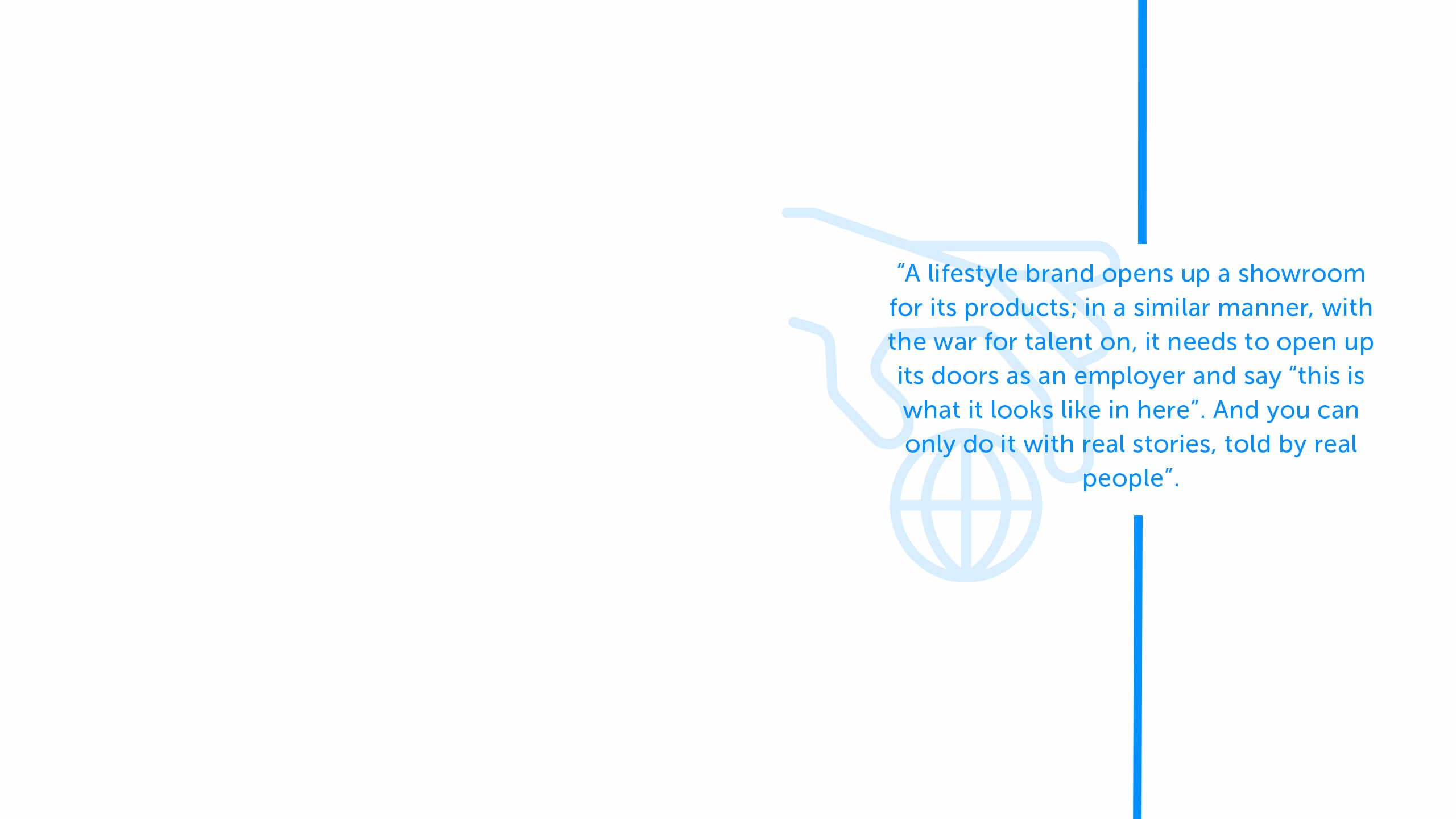



It’s a safe bet to say that by March 2020 every employer had mental health and wellbeing on their agenda in some way. However, it’s an equally safe bet to guess that no one was prepared for the impact of lockdowns, remote working, financial uncertainty, childcare pressures, and social isolation that hit the workforce. So what have employers learned from this crisis and what comes next?
Julie Benjamin, HR Director, Neptune, uses the words “smashing through barriers” when talking about mental health and wellbeing at her company. Neptune employees, she believes, were brought closer by the crisis, and some of that has been borne out of honest conversations where people have been open about struggling with mental health. The way people interact as a team has been characterised by a human approach.
“As we went through the last two years, periodically people fell behind – and others went back for them. It’s a cultural shift because the commercial drive to succeed and the financial targets that the business was aligned behind two years ago, have been supplemented by the willingness to stop and look after people before the business can move forward".
One unforeseen and positive effect of the pandemic noted by many HR professionals is a more humanising and engaging requirement for employees and businesses to speak to each other, one that often was not there before. The resulting “all for one” spirit, if organisations can harness and nurture it, stands to be a powerful accelerator for agile change.
Getting the basics right
The commitment to wellbeing starts with truly caring about the employees’ day-to-day lives. James Goulding, Regional Director of People & Culture at PPHE Hotel Group, elaborates: “We can fall into the trap of looking at the top of Maslow’s ‘pyramid’ when it comes to people management. In fact, what we are seeing with the deepening cost of living crisis is increasingly the need to get the basics right. Do people have what they need on a day-to-day basis? Do they have job security? Would weekly payroll help them to ease the pressure? If they get meals at work, are they of decent quality?
“It’s about treating people with dignity. In a sector hit hard over the last two years, it’s about not being too ambitious while we are going through the recovery period and still seeing impact of the pandemic coming down the line. We cannot overlook the basic needs. Aligned to that are some lingering emotional effects of having been through the pandemic; the mental health issues, the isolation for some people, the family life disruption for others.”
“We need to be patient, inclusive, and bring people along on the journey as the move towards a more stable position and more predictable levels of business”.
Wellbeing: listening
The way employers ‘do’ wellbeing is changing. The days of the ‘low hanging fruit’ initiatives such as lunchtime yoga or mindfulness workshops are gone, or at least going, as employers realise that to ‘do’ wellbeing you need to start with those at the heart of it.
Danone underwent its ‘Local First’ transformation during the pandemic. Supporting its workforce through change as well as the public health crisis became one of the top priorities for its HR team. They rose to the challenge by listening. Rather than make assumptions and throw tools and answers out there in the hope that some will be correct, Danone’s HR team were choiceful about what they offered and to whom, based on what the audience was telling them. The process was continuous and iterative by gathering employees’ feedback and refining and defining the support available in a continuous cycle. Regular surveying, in conjunction with tools like focus groups when ‘survey fatigue’ threatened to set in, pointed the team towards wellbeing resources that the audience truly needed.
“Getting honest opinions from our employees has been vital for our wellbeing programme”.
Wellbeing in a hybrid environment
The end of the pandemic must not spell out the end of the wellbeing conversation. The focus may shift though as we are quickly coming to the realisation that our working lives will never be exactly what they used to be.
For instance, many HR professionals have turned to change support tools to help their workforce adjust to the new realities. ‘Creating change resilience’ and ‘managing personal boundaries’ are some of the skills HR are setting out to help employees with currently.
Elsewhere, in the spirit of holistic wellbeing, HR is questioning how much they can monitor, or even intervene, when employees’ home setups are inadequate. If an employee is sitting badly, and working longer than usual hours with bad posture, are we eventually going to see health issues like repetitive strain injuries, back and neck pains? From a legal perspective, will we in five to ten years’ time, see an increase in employment claims? HR professionals are advising that care and attention to physical wellbeing will not only create a happier workforce now, but may protect from risks in the future.
“We are engaging with healthcare consultants and assessing what our benefits offering looks like in the new world of smart working and wellbeing.”
Many employers have considered modifying their mental health first aid training to reflect hybrid and remote working, where early signs of burnout, disengagement or stress are harder to spot. This is also being flagged as a live issue for line managers who need upskilling in their wellbeing consideration.
Wellbeing and the line manager
As with many other HR conversations, the wellbeing narrative inevitably begins with reviewing the skills of line managers.
Professor Sir Cary Cooper CBE chairs the National Forum for Health and Wellbeing at Work, which he founded in 2018. The Forum, which includes over 40 HR Directors, Chief Medical Officers, Directors of Health & Wellbeing from global employers such as BT, BP, Glaxo Smith Kline and Rolls Royce, set out to explore issues around wellbeing. The Forum members are in full agreement that the line manager is top of the agenda.
In the wellbeing space, the pandemic has not created new challenges, but exacerbated the existing ones. Arguably, that’s a positive development from a HR point of view as two principal issues have come to the fore: flexible working and the line manager.
“If you want to improve the health, wellbeing, and productivity of organisations, you have to have line managers who have good emotional intelligence and good social interpersonal skills”.
James Goulding, Director of People & Culture at PPHE Hotel Group, agrees: “When it comes to effective managers, there’s all sorts of skills. There’s ‘the way we do things’, there’s policies and procedures, there’s competencies and expectations. However, at the end of the day, you’ve also got to have managers who just appreciate people. There’s no training that can replace that. The emotional intelligence plays a huge part; managers who can build commitment - to themselves, their teams, and to the organisation - will win. Those who see workers as dispensable will face tougher challenges”.
As a society and as employers, we tend to recruit and promote people to managerial roles based on their technical skills rather than their people skills. As things stand, in Professor Sir Cary Cooper's rough estimation:
- 30% to 40% of the UK’s existing managerial pool, from shop floor to top floor, probably have naturally good people skills.
- Another 40% don’t have the innate skills but are likely trainable.
- The real concern is the remaining 20%. This cohort are likely excellent professionals but poor people managers, and should be retained in a technical role.
This simple realisation opens up the raw issue of how organisations are shaped. Should organisations continue to be pyramidal, so that the only way one can progress is to become a manager? Alternatively, should we come up with a square system, so that a good technical person could go all the way to the top as an engineer, keep their technical role, and get paid the equivalent of a top manager’s salary? Whichever way we go, the message on mental health at work is clear: what we need when we select people or promote them, is parity between technical and people skills.
“In order to retain talent, wellbeing has to be the driver. But mindfulness at lunch, sushi, beanbags and ping pong tables aren’t going to cut it anymore, not with millennials and Gen Z. These generations simply aren’t prepared to tolerate bad cultures. They are looking for cultures that trust them, value them, allow them to work flexibly, manage them by recognition and praise, and don’t make them work punishing hours; get this wrong and you will face ‘regrettable turnover".
The strategic wellbeing culture
The pandemic has been a major accelerator of the wellbeing conversation. It’s created the burning - or at the very least smouldering – platform, so that the agent for change is now here. It’s a good place from which organisations can move forward.
A culture that supports wellbeing can only be created when wellbeing is a strategic issue. Organisations need to move on from the ‘yoga and smoothies’ approach to wellbeing and embrace it as an issue with a very real impact on the bottom line.
Wellbeing is now a senior leadership team issue that many global employers take very seriously. What employees need next is to see this issue addressed at all stages of the workforce. At this point, only about 30% of businesses and public sector bodies in the UK see wellbeing as a strategic issue, but that percentage is increasing every year.
It is not enough for HRDs to bring strategic wellbeing to the boardroom table; to give it real meaning, we need to ensure that organisations are held accountable. We have, as a society, introduced metrics for the gender pay gap. Now the National Forum for Health and Wellbeing at Work is calling for the same metrics and accountability in the wellbeing space.
The Forum is currently looking into developing a set of metrics that a wellbeing Non-executive director (NED) would need in order to hold the board accountable. This set is likely to include metrics such as stress-related or mental health related sickness absence, presenteeism, regrettable labour turnover, employee job satisfaction, etc. A lot of employers already measure and report employee engagement; they now need to take the next step and report on these other indicators. Crucially, these numbers need to be included in the annual report, front and centre for shareholders to see, rather than end up buried deep in the sustainability report.
Organisations need non-executive directors whose primary responsibility is employee health and wellbeing. The HR profession has already responded to this demand. Job titles such as Director of Health and Wellbeing are becoming more common. The CIPD has developed courses for HR people who want to specialise in wellbeing and a number of UK universities offer Master’s Degrees in Organisation Health Psychology.
Wellbeing in 5 steps
by Professor Sir Cary Cooper CBE
Step 1: Take stock
Approach strategic health and wellbeing as a process. It's not complicated. First of all, you need employee voice; you need to know how your employees perceive your organisation. Start by asking your staff to fill in a wellbeing auditing instrument. Crunch your data by the demographics so you know what issues different groups, such as, for instance, women or middle management, have.
Step 2: Devise strategy
Take the data to senior management and report on the metrics. Task a senior manager / your Health & Wellbeing NED with building your wellbeing strategy and getting senior management on board. You may need a number of strategies for dealing with the issues raised by various demographics.
Step 3: Act
Run the interventions. You may want to action this yourself and/or get consultants to assist. When planning interventions, take the strategic approach and work on your culture, rather than opt for the ‘low-hanging fruit’ of mindfulness at lunch and mental health first aid only.
Step 4: Repeat
From here it’s a cycle of identifying issues, taking stock, intervening, and regular reporting on the metrics. An intervention may not always succeed, but a negative result will help you shape the next intervention.
“Managing health and wellbeing at work is about creating a culture where organisations retain and attract the right people. Wellbeing isn’t a fuzzy construct anymore."

It’s a safe bet to say that by March 2020 every employer had mental health and wellbeing on their agenda in some way. However, it’s an equally safe bet to guess that no one was prepared for the impact of lockdowns, remote working, financial uncertainty, childcare pressures, and social isolation that hit the workforce. So what have employers learned from this crisis and what comes next?
Julie Benjamin, HR Director, Neptune, uses the words “smashing through barriers” when talking about mental health and wellbeing at her company. Neptune employees, she believes, were brought closer by the crisis, and some of that has been borne out of honest conversations where people have been open about struggling with mental health. The way people interact as a team has been characterised by a human approach.
“As we went through the last two years, periodically people fell behind – and others went back for them. It’s a cultural shift because the commercial drive to succeed and the financial targets that the business was aligned behind two years ago, have been supplemented by the willingness to stop and look after people before the business can move forward".
One unforeseen and positive effect of the pandemic noted by many HR professionals is a more humanising and engaging requirement for employees and businesses to speak to each other, one that often was not there before. The resulting “all for one” spirit, if organisations can harness and nurture it, stands to be a powerful accelerator for agile change.
Getting the basics right
The commitment to wellbeing starts with truly caring about the employees’ day-to-day lives. James Goulding, Director of People & Culture at PPHE Hotel Group, elaborates: “We can fall into the trap of looking at the top of Maslow’s ‘pyramid’ when it comes to people management. In fact, what we are seeing with the deepening cost of living crisis is increasingly the need to get the basics right. Do people have what they need on a day-to-day basis? Do they have job security? Would weekly payroll help them to ease the pressure? If they get meals at work, are they of decent quality?
“It’s about treating people with dignity. In a sector hit hard over the last two years, it’s about not being too ambitious while we are going through the recovery period and still seeing impact of the pandemic coming down the line. We cannot overlook the basic needs. Aligned to that are some lingering emotional effects of having been through the pandemic; the mental health issues, the isolation for some people, the family life disruption for others.”
“We need to be patient, inclusive, and bring people along on the journey as the move towards a more stable position and more predictable levels of business”.
Wellbeing: listening
The way employers ‘do’ wellbeing is changing. The days of the ‘low hanging fruit’ initiatives such as lunchtime yoga or mindfulness workshops are gone, or at least going, as employers realise that to ‘do’ wellbeing you need to start with those at the heart of it.
Danone underwent its ‘Local First’ transformation during the pandemic. Supporting its workforce through change as well as the public health crisis became one of the top priorities for its HR team. They rose to the challenge by listening. Rather than make assumptions and throw tools and answers out there in the hope that some will be correct, Danone’s HR team were choiceful about what they offered and to whom, based on what the audience was telling them. The process was continuous and iterative by gathering employees’ feedback and refining and defining the support available in a continuous cycle. Regular surveying, in conjunction with tools like focus groups when ‘survey fatigue’ threatened to set in, pointed the team towards wellbeing resources that the audience truly needed.
“Getting honest opinions from our employees has been vital for our wellbeing programme”.
Wellbeing in a hybrid environment
The end of the pandemic must not spell out the end of the wellbeing conversation. The focus may shift though as we are quickly coming to the realisation that our working lives will never be exactly what they used to be.
For instance, many HR professionals have turned to change support tools to help their workforce adjust to the new realities. ‘Creating change resilience’ and ‘managing personal boundaries’ are some of the skills HR are setting out to help employees with currently.
Elsewhere, in the spirit of holistic wellbeing, HR is questioning how much they can monitor, or even intervene, when employees’ home setups are inadequate. If an employee is sitting badly, and working longer than usual hours with bad posture, are we eventually going to see health issues like repetitive strain injuries, back and neck pains? From a legal perspective, will we in five to ten years’ time, see an increase in employment claims? HR professionals are advising that care and attention to physical wellbeing will not only create a happier workforce now, but may protect from risks in the future.
“We are engaging with healthcare consultants and assessing what our benefits offering looks like in the new world of smart working and wellbeing.”
Many employers have considered modifying their mental health first aid training to reflect hybrid and remote working, where early signs of burnout, disengagement or stress are harder to spot. This is also being flagged as a live issue for line managers who need upskilling in their wellbeing consideration.
Wellbeing and the line manager
As with many other HR conversations, the wellbeing narrative inevitably begins with reviewing the skills of line managers.
Professor Sir Cary Cooper CBE chairs the National Forum for Health and Wellbeing at Work, which he founded in 2018. The Forum, which includes over 40 HR Directors, Chief Medical Officers, Directors of Health & Wellbeing from global employers such as BT, BP, Glaxo Smith Kline and Rolls Royce, set out to explore issues around wellbeing. The Forum members are in full agreement that the line manager is top of the agenda.
In the wellbeing space, the pandemic has not created new challenges, but exacerbated the existing ones. Arguably, that’s a positive development from a HR point of view as two principal issues have come to the fore: flexible working and the line manager.
“If you want to improve the health, wellbeing, and productivity of organisations, you have to have line managers who have good emotional intelligence and good social interpersonal skills”.
James Goulding, Director of People & Culture at PPHE Hotel Group, agrees: “When it comes to effective managers, there’s all sorts of skills. There’s ‘the way we do things’, there’s policies and procedures, there’s competencies and expectations. However, at the end of the day, you’ve also got to have managers who just appreciate people. There’s no training that can replace that. The emotional intelligence plays a huge part; managers who can build commitment - to themselves, their teams, and to the organisation - will win. Those who see workers as dispensable will face tougher challenges”.
As a society and as employers, we tend to recruit and promote people to managerial roles based on their technical skills rather than their people skills. As things stand, in Professor Cooper’s rough estimation:
- 30% to 40% of the UK’s existing managerial pool, from shop floor to top floor, probably have naturally good people skills.
- Another 40% don’t have the innate skills but are likely trainable.
- The real concern is the remaining 20%. This cohort are likely excellent professionals but poor people managers, and should be retained in a technical role.
This simple realisation opens up the raw issue of how organisations are shaped. Should organisations continue to be pyramidal, so that the only way one can progress is to become a manager? Alternatively, should we come up with a square system, so that a good technical person could go all the way to the top as an engineer, keep their technical role, and get paid the equivalent of a top manager’s salary? Whichever way we go, the message on mental health at work is clear: what we need when we select people or promote them, is parity between technical and people skills.
“In order to retain talent, wellbeing has to be the driver. But mindfulness at lunch, sushi, beanbags and ping pong tables aren’t going to cut it anymore, not with millennials and Gen Z. These generations simply aren’t prepared to tolerate bad cultures. They are looking for cultures that trust them, value them, allow them to work flexibly, manage them by recognition and praise, and don’t make them work punishing hours; get this wrong and you will face ‘regrettable turnover".
The strategic wellbeing culture
The pandemic has been a major accelerator of the wellbeing conversation. It’s created the burning - or at the very least smouldering – platform, so that the agent for change is now here. It’s a good place from which organisations can move forward.
A culture that supports wellbeing can only be created when wellbeing is a strategic issue. Organisations need to move on from the ‘yoga and smoothies’ approach to wellbeing and embrace it as an issue with a very real impact on the bottom line.
Wellbeing is now a senior leadership team issue that many global employers take very seriously. What employees need next is to see this issue addressed at all stages of the workforce. At this point, only about 30% of businesses and public sector bodies in the UK see wellbeing as a strategic issue, but that percentage is increasing every year.
It is not enough for HRDs to bring strategic wellbeing to the boardroom table; to give it real meaning, we need to ensure that organisations are held accountable. We have, as a society, introduced metrics for the gender pay gap. Now the National Forum for Health and Wellbeing at Work is calling for the same metrics and accountability in the wellbeing space.
The Forum is currently looking into developing a set of metrics that a wellbeing Non-executive director (NED) would need in order to hold the board accountable. This set is likely to include metrics such as stress-related or mental health related sickness absence, presenteeism, regrettable labour turnover, employee job satisfaction, etc. A lot of employers already measure and report employee engagement; they now need to take the next step and report on these other indicators. Crucially, these numbers need to be included in the annual report, front and centre for shareholders to see, rather than end up buried deep in the sustainability report.
Organisations need non-executive directors whose primary responsibility is employee health and wellbeing. The HR profession has already responded to this demand. Job titles such as Director of Health and Wellbeing are becoming more common. The CIPD has developed courses for HR people who want to specialise in wellbeing and a number of UK universities offer Master’s Degrees in Organisation Health Psychology.
Wellbeing in 5 steps
by Professor Sir Cary Cooper CBE
Step 1: Take stock
Approach strategic health and wellbeing as a process. It's not complicated. First of all, you need employee voice; you need to know how your employees perceive your organisation. Start by asking your staff to fill in a wellbeing auditing instrument. Crunch your data by the demographics so you know what issues different groups, such as, for instance, women or middle management, have.
Step 2: Devise strategy
Take the data to senior management and report on the metrics. Task a senior manager / your Health & Wellbeing NED with building your wellbeing strategy and getting senior management on board. You may need a number of strategies for dealing with the issues raised by various demographics.
Step 3: Act
Run the interventions. You may want to action this yourself and/or get consultants to assist. When planning interventions, take the strategic approach and work on your culture, rather than opt for the ‘low-hanging fruit’ of mindfulness at lunch and mental health first aid only.
Step 4: Repeat
From here it’s a cycle of identifying issues, taking stock, intervening, and regular reporting on the metrics. An intervention may not always succeed, but a negative result will help you shape the next intervention.
“Managing health and wellbeing at work is about creating a culture where organisations retain and attract the right people. Wellbeing isn’t a fuzzy construct anymore."

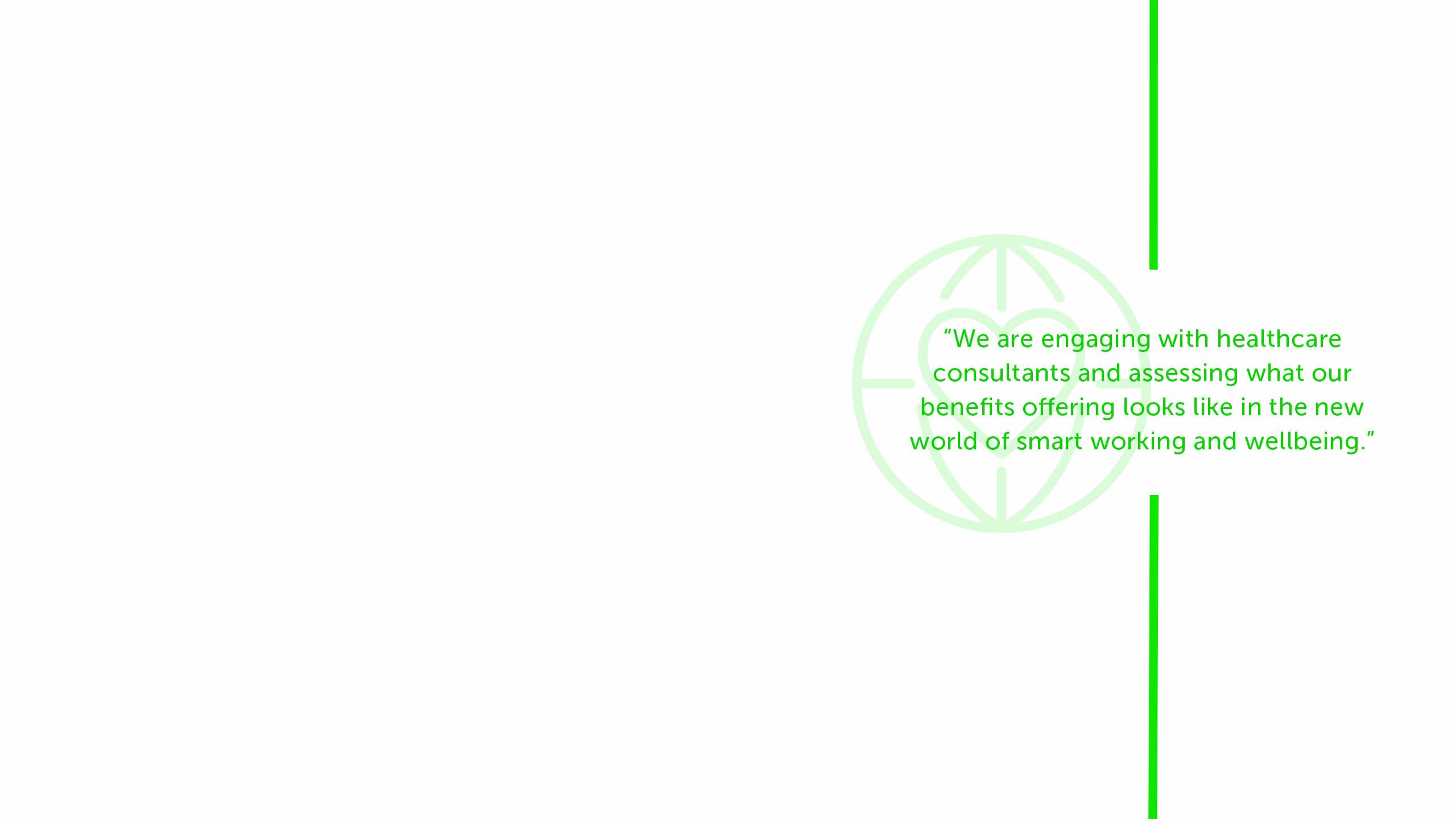
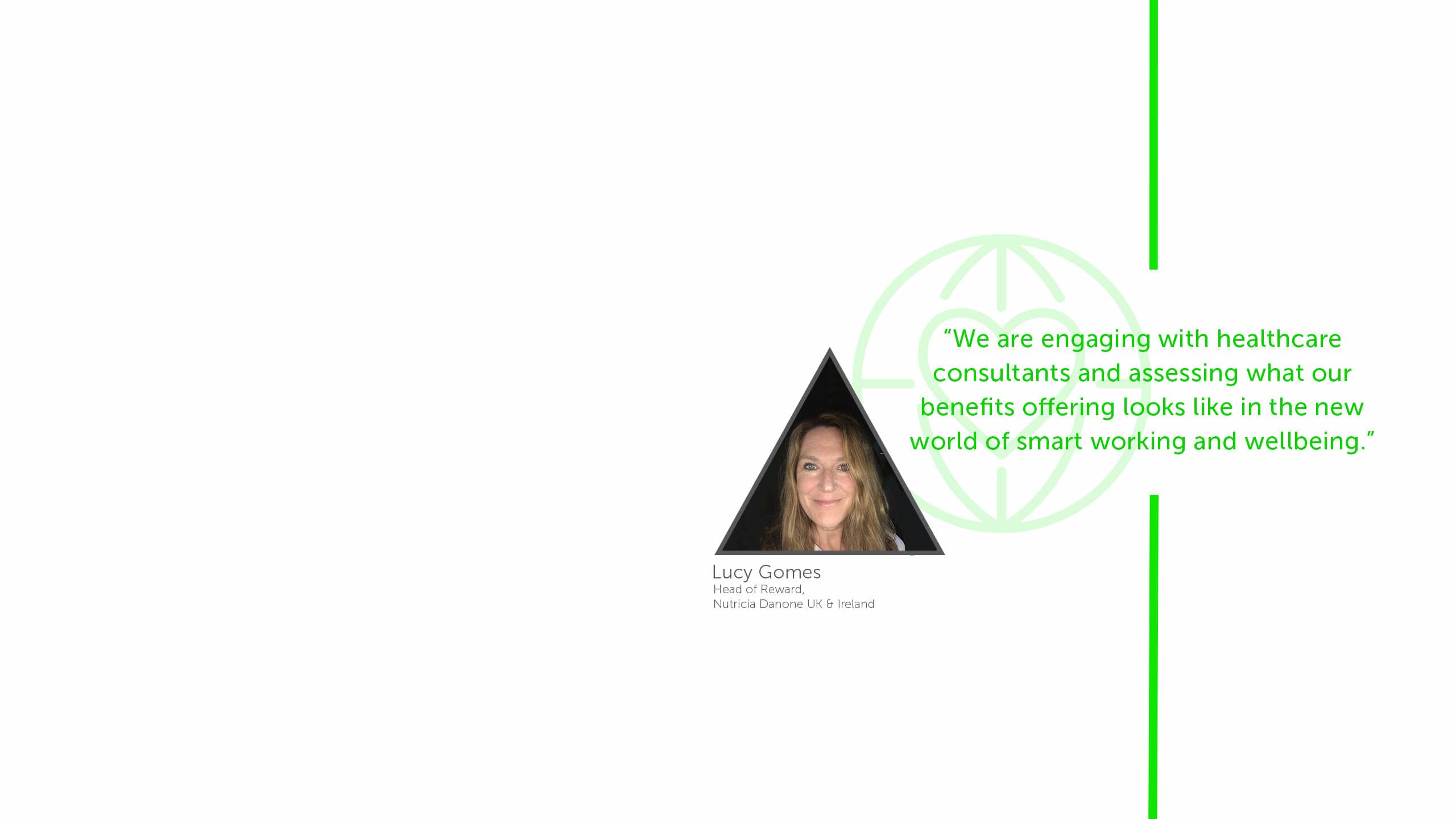


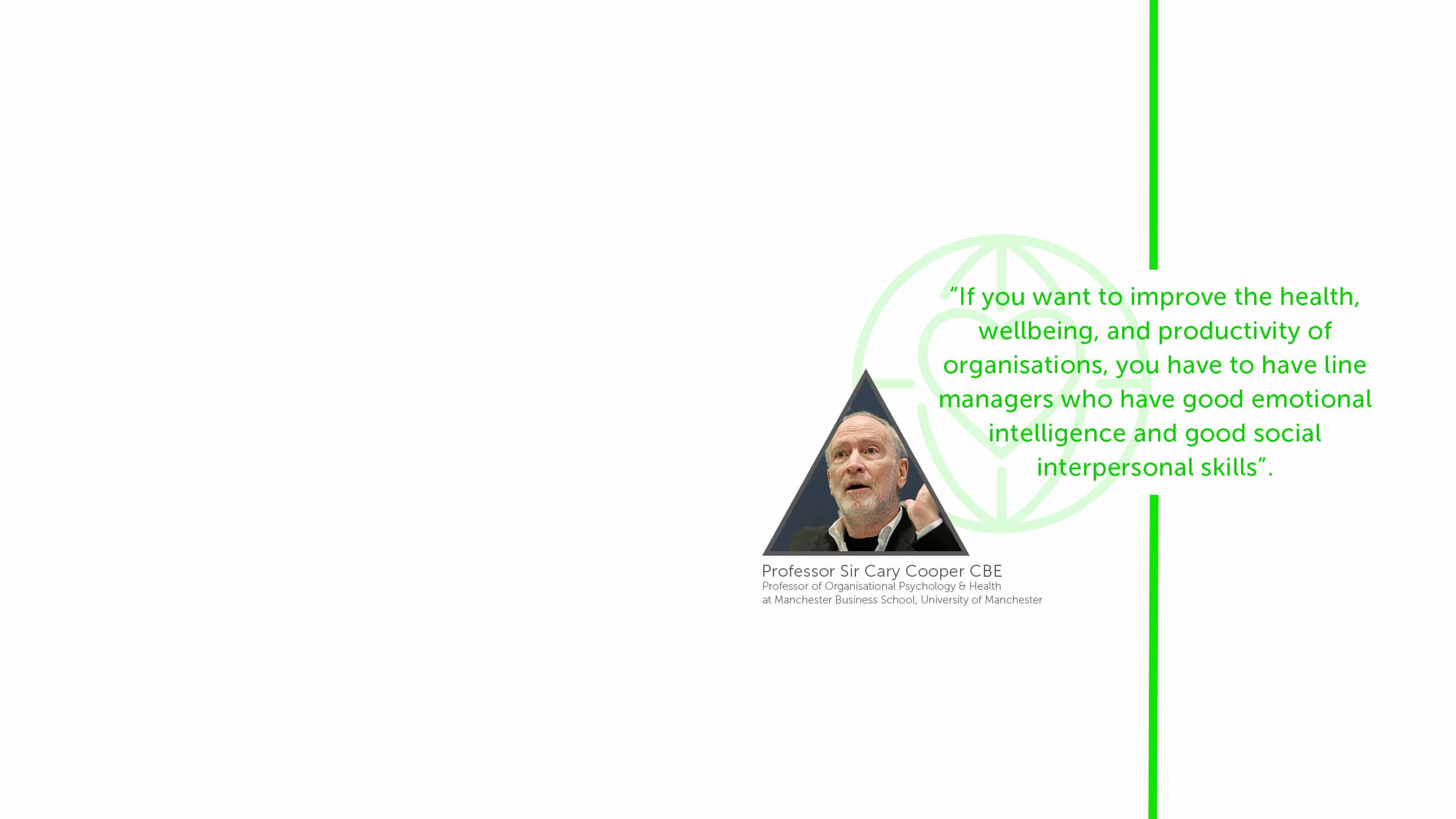

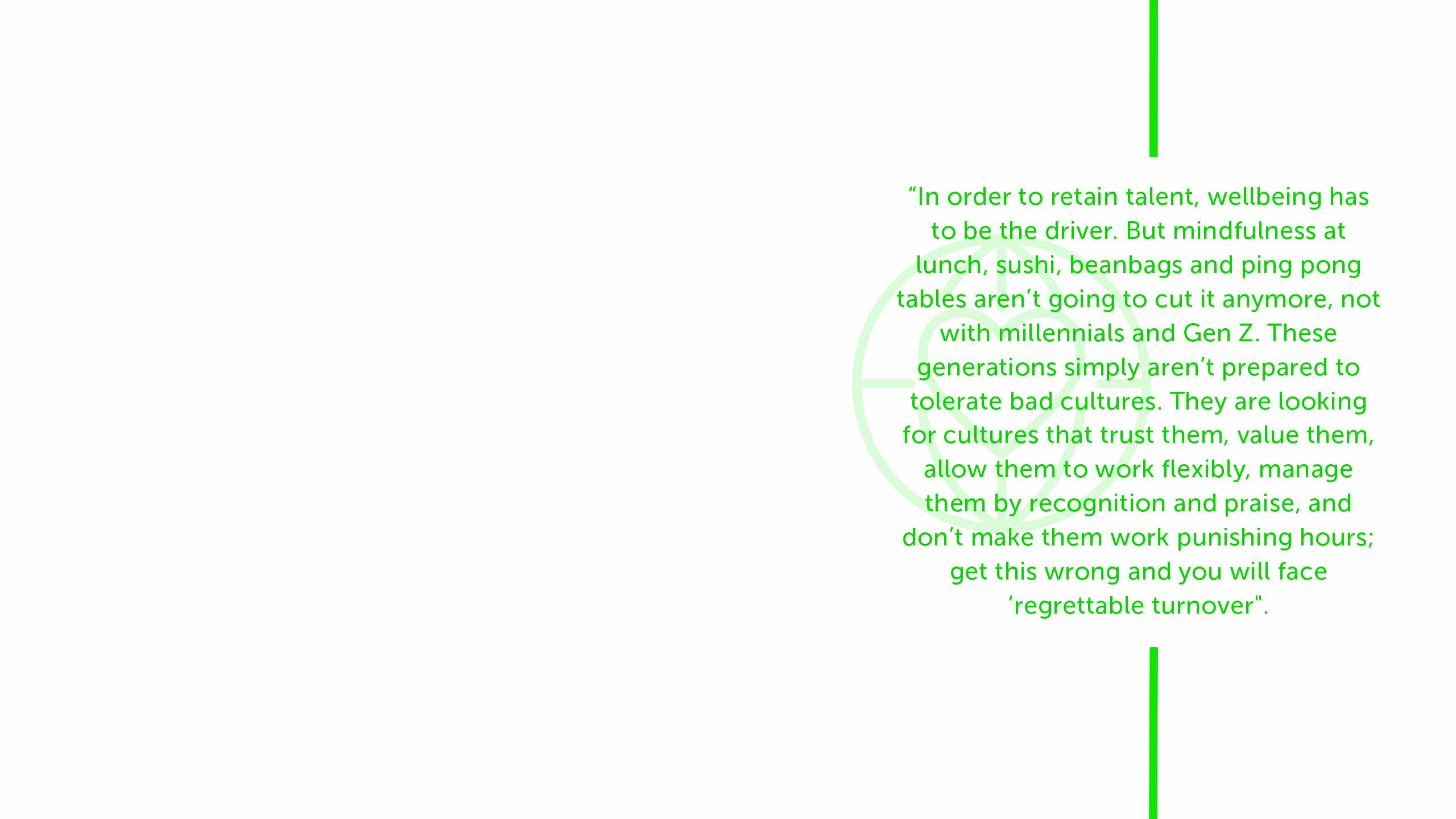
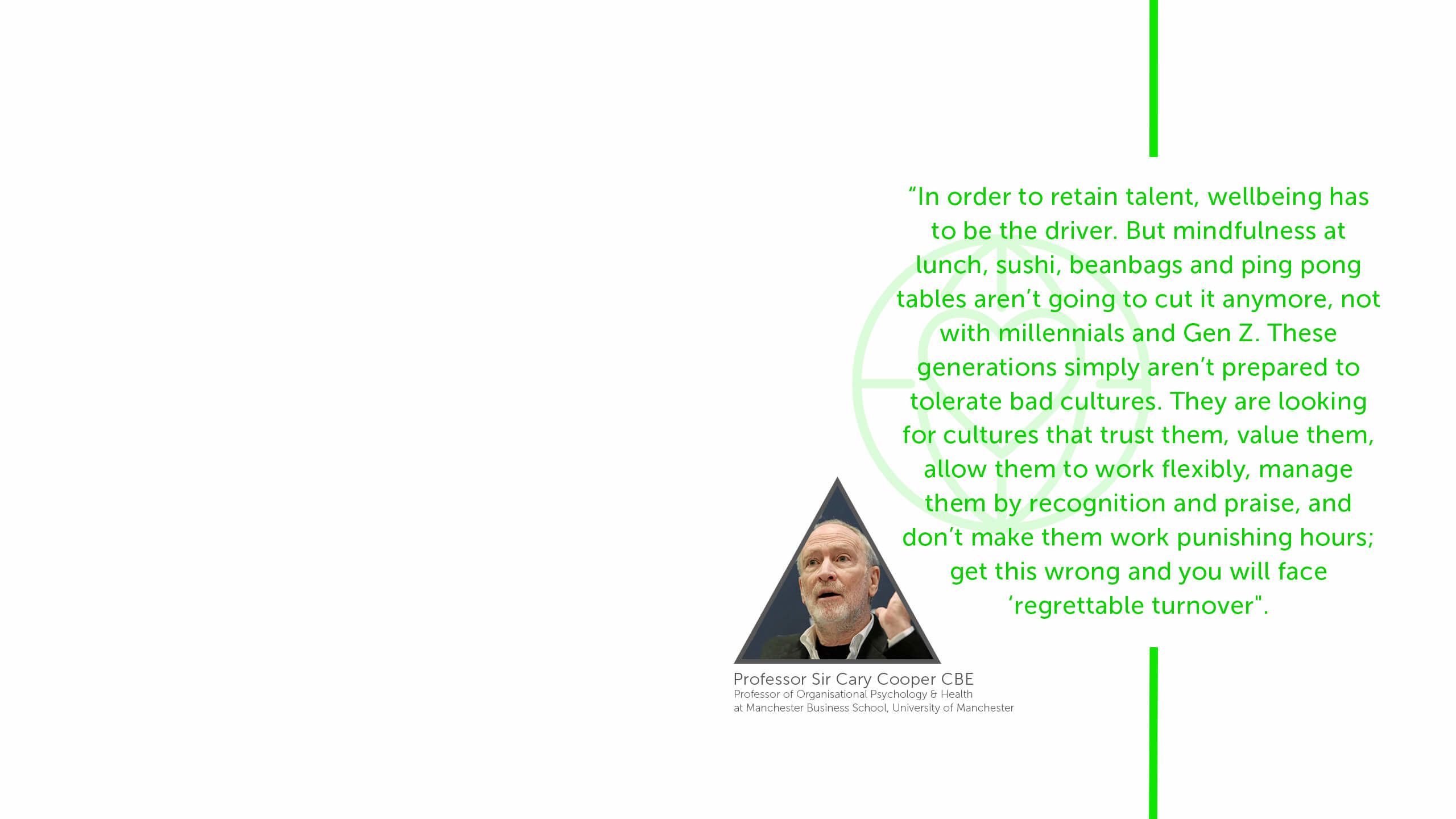


Home working and hybrid working are not new concepts. Both fall under the broader definition of flexible working which has been enshrined in legislation for a while. Let’s unpack what’s changed.
Organisational psychologists point out that most businesses had flexible working arrangements available to employees pre-pandemic, however workers didn’t feel they could put in flexible working requests because it would show a lack of commitment and adversely affect their career prospects.
The pandemic, lockdowns and the ensuing requirement to work from home have changed the perceptions around permission. The law hasn’t changed; the Government is consulting on flexible working changes only in a very small way. But when employees would historically express the wish to work flexibly and the employer denied the request, lawyers would often advise a trial period. Now the pandemic catalysed the trial period of all trial periods, and the evidence suggests most office workers not only have permission to work from home, but are often encouraged to do so.
It's what employers are going to do next that matters.
The only game in town
It's time for companies to think seriously about their ways of working. 9 to 5, Monday to Friday, office-based is no longer normal. Richard Roberts, Culture, Employee Engagement and HR Consultant at enRich, formerly People Director at Pure Planet, says: "Ultimately, it’s about employers trusting their people to work wherever and whenever – within reason – they work best”. Even if instinctively a company isn’t keen on flexible working, they now will have to do it if they want to recruit and retain good people.
In a recent webinar on hybrid working hosted by The Economist, Marc Thompson, Senior Fellow in Strategy and Organisation at Saïd Business School, echoed those words: “Flexibility is the only game in town and candidates will be more willing to join more adaptive organisations. If they haven’t yet, employers need to get their thinking caps on to figure this out”.
The HR team at food-product corporation, Danone are seeing evidence first-hand: “Candidates aren’t simply excited to see that we’re offering flexibility; in fact, this flexibility seems to be non-negotiable for some of them and is a deciding factor in terms of whether they’d accept an offer or not. In terms of what candidates are looking for, flexibility is certainly up there as a high priority”.
Hybrid aside, trust, autonomy and choice are becoming what employees are looking for in employers.
“At the moment we are experiencing the war on talent and the great resignation – that I call the “Covexodus” - where people have had the time to reconsider their careers, maybe get a slightly different work/life balance, and developed new patterns and habits; so when employers then insist that staff break these new habits and come back to the office, Covexodus happens.”
With the current job market buoyant and strongly in favour of candidates, organisations face a real need to make flexible working a priority and to equip their workforce with the skills to navigate this new environment.
What kind of hybrids are there?
Management academics talk about different types of hybrid. There’s office-first and remote-first hybrids; there’s time flex as well as space flex, and strategies differ across different models.
In an office-first hybrid, a lot of the discussion focuses on how to use the office to attract employees and ensure that employees (when actually in the office), have a great experience. With a digital-first hybrid, it is very much centered around how we make sure that we function virtually and then use face-to-face interactions to build trust and relationships.
There is not – or at least, not yet - a clear rule book on hybrid. So far, employers and academics agree on one thing: it is a hard model to get right. The main challenges aren’t on the technology side; the ‘holy trinity’ of cloud, connectivity and collaboration tools have got us through the pandemic, and tech continues to develop and deliver.
“The real challenge of hybrid is the cultural piece”.
It is therefore fascinating to see how organisations have been implementing hybrid working so far. Danone, for instance, took a view quite early on around their ‘smart working’ model and made sure that was something the organisation was leading on rather than responding to. To achieve buy-in from the outset, the HR team obtained insight and feedback from Danoners early on.
“It was clear to us what our employees wanted and what they were asking for. Rather than looking to “what global are doing”, we were able to design with our local end goal in mind, and with the employees’ contributions in mind. As a concept it then landed really well because we could genuinely trace our guidance to what our employees have asked for. We’d responded and developed our smart working principles based on our experience and on the positive aspects that came out of Covid.”
It is early days for widespread hybrid working, but clear themes are emerging when it comes to discussing its challenges.
The risk of gender inequality
Pre pandemic, research evidence indicated that on the whole, men didn’t utilise flexible working options as frequently as women tended to. The pandemic has been a great equaliser, yet already anecdotal evidence is emerging that even with the explicit permission to work from home, men as a population are behaving as they did pre-Covid. If they choose to not take advantage of flexible working models, the risk of gender inequality remains.
Proximity bias
Dr Nicola Millard, Principal Innovation Partner, BT explains: “Proximity bias is by nature not malicious. It is basically how our brains are wired: if we see people on a regular basis, we tend to trust them more”.
Evidence seen in research prior to the pandemic shows huge implications this bias has around prospects for promotion and bonus.
“We have people making choices; some will choose to be in the office a lot because they’re sociable and gregarious, and that’s where they feed their energy from. Others will focus so much better and be reflective and want to be at home. That’s when it becomes about managers not being unconsciously biased just because they may be seeing some people more frequently.”
With this in mind, Danone’s ‘smart working’ model is aimed at ensuring that management is still fair, that everyone has the same opportunities, and the same share of voice. Rather than put into place rigid rules about X days in the office, the organisation chose to create principles that define expectations. How managers take those principles and apply them in their day job is obviously the challenge. It remains down to HR to train line managers as to the opportunities and challenges of managing in a hybrid environment.
The geography challenge
In theory, the ‘holy trinity’ of connectivity, cloud and collaboration tools enables employees to work from anywhere. However in practice, when faced with requests to work from abroad, HR teams face very real constraints around immigration, tax, social security, wellbeing, health and safety, personal security, and more.
“Danone has identified over 15 risk areas that prevent employers from simply working from anywhere in the world. There may be changes to this in the future, but it’s dependent on factors such as tax regimes and social security. If we had a time machine and could go forward 20 years, it might be a very different world, but until tax authorities can adapt things like dual agreements, working from abroad will not be straightforward.”
The blurred boundaries
At zero-emission vehicle manufacturing company Arrival, Daniel Chin explains: “Initially, we wanted people to come back because as a business we were worried that home working would be less efficient than working in an office. However, we soon realised people were working more efficiently – and working longer hours.
“Now Arrival’s challenge is establishing some guiding principles to keep the efficiency of remote working, but create a greater distinction between work and life outside work. We need to find out how to make home working work in a healthy and sustainable way.”
Dr Nicola Millard, Principal Innovation Partner, BT agrees: “Early trials of home working back in the 1990s demonstrated that boundaries tend to crumble. Home workers have found their own solutions, often simple but ingenious, to the boundary challenge. For instance, one employee indicated that she was working by putting on her passcard lanyard, which she took off when not working. Some used a commute, even when it from their front to their back door, as they found it useful to physically establish boundaries between work and home.
“Regulation, such as the right to disconnect, obviously comes into play here. However, rigid regulation is a blunt instrument and a top-down way to address an issue. A mandate of ‘no emails after 7pm’ is not going to work in a company that is spread across time zones”.
A bottom-up approach, conversely, is about the company culture. Working with Cambridge University, Dr Nicola Millard, Principal Innovation Partner, BT was involved in creating the “balanced communication diet for business” which was, like any good diet, a five-step plan to help those experiencing stress identify what those stresses were. Usually, stress boils down to the three Ms of “meetings, managers and messaging”. The next step of the diet is figuring out ways to manage those. With meetings it is, for instance, attending only those that have an agenda and a clear reason for an employee to be there. With messages, it is being clear about channels and keeping only designated – and clearly communicated – ‘emergency’ channels on when needing to concentrate. With managers, it is about enforcing the balanced communication diet with their behaviours and being mindful as to how they do this, for example considering the timing of emails and evaluating what tasks are genuinely urgent.
The unfairness challenge
What about those that cannot work flexibly? What can organisations do to make sure they aren’t left behind?
For instance, at Arrival, a population of employees need to work on the company’s premises as they are working with physical components which they can’t take home.
The same applies to time flexibility. In an organisation as big as Danone, there are populations where time flexibility is more challenging; for instance, in the case of patient service advisors who work on telephones and in shift patterns.
These parts of an organisation will naturally find it more challenging to think how they can embrace the principles of flexibility. Employers are unlikely to come up with one definitive solution to this. Some may forego flexible working completely for fear of creating a two-tier workforce and breeding resentment between different departments. Others, like Nutricia Danone, will respond by leaving it to managers across functions to consider how they might apply the principles of flexible working in different contexts.
“We want to be as diverse as possible so we haven’t limited options if they don’t fit for every group. We’ve tried to explore what can work and what flexibility we can bring in. It’s ongoing at a functional level; we are planning workshops with the functions that face more challenges to explore how we do this. While we won’t be able to offer the same level of flexibility to all groups, the value to their wellbeing and engagement from achieving some method of flexibility and accommodating their personal needs, is worth us exploring”.
In the hospitality sector, where neither time nor place flex is possible, it takes truly out-of-the-box thinking to award staff some degree of flexibility nevertheless. From experience, hotels know their busy seasons and busy times of week/day, and one way of building in some flexibility is giving people time back over quieter periods. At PPHE Hotel Group, the team have also been encouraging hotel operations teams to determine their own rotas. This ‘democratisation’ of scheduling takes care of unavoidable requirements, while granting the staff a reasonable degree of flexibility and demonstrating the employer’s commitment to staff voice and wellbeing. The staff are empowered, on a local level, to have the conversation about their personal needs. Incidentally, this also serves the bottom line by improving retention.
Hybrid working skills
As with almost all HR conversations, the hybrid narrative eventually arrives at the line manager’s door.
For more traditional leaders, who are used to management by observing and walking the floor, hybrid working is a culture shift. With physical proximity mostly gone, they are fearful and trying to cling on to the structure that they once knew. HR professionals see their role as guiding them and giving them the time to get comfortable with ‘the new normal’.
HR managers are clear-eyed about this and realise that effective management in hybrid environments requires a sea change in performance management policies as a whole. Managers face a steep learning curve where performance needs to become measured by outcomes, contribution and outputs rather than inputs, visibility, or time at the desk.
As well as changing the way we measure performance management, we need to give serious thought to how we lead in a hybrid environment. Dr Nicola Millard, Principal Innovation Partner, BT explains: “Fundamentally, leadership is about networking. For very senior leaders, networking is their job; they play golf, go to dinners, do roundtables, and shake hands. All of this can be achieved in a digital space; the only disconnect really is the skillset”.
“Collaboration doesn’t happen by magic. It happens by purpose, and that is part of the networking skill. If you take that into the digital world, the same rules apply: if there is a purpose to network, people will network. Actually, the digital space widens the scope as it removes the geographical constraints. The trouble is networking is a skill and it is not a skill that many of us possess. London Business School did some research into this, and found that it was only about one in four of us who are natural networkers. The good news is you can train it. We need to learn more about how we network meaningfully and create purpose and connection. As we move into hybrid spaces, every employee, not just leaders, needs to become a good digital networker, and networking skills need to have a place on the strategic agenda”.
Another important point is that we should not approach hybrid as a simple wholesale ‘move’ of all the usual activity into the digital space. A lot of organisations made a common mistake here and tried to compensate for the lack of ‘serendipitous’ office interactions by having a lot of meetings.
“The problem with the meetings is that in the digital space it is very easy to just lift and shift the analogue notion of a meeting. And then we schedule those meetings in 30 to 60 minute chunks and end up getting up with ‘an impending sense of Zoom’ because all we do is meetings that don’t leave any time to get the actual work done.”
“The advantage of digital interactions is that they are usually written, or recorded, and therefore visible to everyone. Digital conversations are no longer exclusive to those co-located in an office; in fact, they are very inclusive conversations as they can incorporate anyone and everyone. If we are going to make hybrid models work, those side conversations that you would normally have in an office now need to also be visible to those who aren’t in the office. This is a real shift in the way that work works because it moves from a meeting-driven synchronous culture to a more written asynchronous culture that is visible to everyone.”
The opportunity here is to extend the collaboration bubble out to those who aren’t in the office – and in fact were never meant to be in the office. In case of BT, it could be a field engineer; in the NHS, a paramedic connecting to a remote doctor.
The role of the office
Offices are changing. They were changing prior to the pandemic as business leaders realised offices weren’t necessary for working, but instead were places employees went to socialise about work.
We are starting to see the office as a social space that is about collaboration, communication, and creation of community. These are the three primary functions of an office, but there are many others as well. Traditional open plan offices that are built for capacity and not much else are right for the bulk of people who are there to collaborate, communicate and being noisy as a community. Equally though, there are a proportion of workers that will want focussed silence, notably neurodiverse people. We have got to think very carefully about the offices that genuinely work for people if we are going to compel them to come into physical spaces. The traditional ‘one size fits all’ office with lots of desks for max capacity is not going to be around for much longer.
We must remember, from a practical perspective, not everyone can work from home as not everyone has the privilege of a suitable homeworking environment. As Dr Millard explains, about 70% of people who work from home thought it worked really well for them, but there are about 30% that said it didn’t. This 30% tends to skew younger; it is often people in shared housing who are at the beginning of their learning curve. In fact, for anyone who’s new in post and learning about their role as well as the culture of their workplace, learning is often easier when they can physically observe behaviours.
The six rules of hybrid
By Dr Nicola Millard, Principal Innovation Partner, BT
We are still learning what hybrid means. Dr Nicola Millard offers the following practical hybrid model learnings to employers for use in their strategic planning.
1. Acknowledge that you don’t know things.
Being honest about not knowing all the answers when it comes to hybrid working is a healthy attitude. An acknowledgement like this is a big, and often uncomfortable step, particularly for senior managers. However, it is wise to remember that saying you don’t have a plan yet, or you are not sure how something is going to work, is acknowledging that we are in a territory with a lot of unknown variables.
2. Have an experimental mindset.
Frankly, when it comes to innovation, most things fail. However, it is not the reason to give up innovation. Instead, the healthy attitude is to learn from that failure and hopefully do it better the next time. A refreshing number of companies, both big and small, are currently taking this experimental approach and openly saying to their staff that they do not yet know what the optimal mix is.
3. Ask the fundamental question - “what is the office for?”
Why should you be in it? Ultimately, the people, the team, and the tasks they are doing should dictate whether they need to be in an office or not.
4. Think about if, and how, you need to adapt spaces.
What can you do with the spaces you have? What are the employees’ requirements? Asking those questions and involving employees in decisions is extremely valuable, and learning from practical experiences, is the right attitude to have.
5. Think about flexibility in terms of space *and* time.
Where you have groups of employees who cannot work from home, consider flexibility in hours, whether that is in flexible work hours, or the ability to trade hours, or time bartering. Time flex can play into attracting a more diverse workforce and addressing the skill shortage by fundamentally giving your employees a little more choice and autonomy about when they work.
6. When it comes to planning, have a fluid mindset and involve your employees.
We currently operate in an accelerated VUCA (volatility, uncertainty, complexity and ambiguity) world that the pandemic has created. Building more resilience in this time of uncertainty is key.

Home working and hybrid working are not new concepts. Both fall under the broader definition of flexible working which has been enshrined in legislation for a while. Let’s unpack what’s changed.
Organisational psychologists point out that most businesses had flexible working arrangements available to employees pre-pandemic, however workers didn’t feel they could put in flexible working requests because it would show a lack of commitment and adversely affect their career prospects.
The pandemic, lockdowns and the ensuing requirement to work from home have changed the perceptions around permission. The law hasn’t changed; the Government is consulting on flexible working changes only in a very small way. But when employees would historically express the wish to work flexibly and the employer denied the request, lawyers would often advise a trial period. Now the pandemic catalysed the trial period of all trial periods, and the evidence suggests most office workers not only have permission to work from home, but are often encouraged to do so.
It's what employers are going to do next that matters.
The only game in town
It's time for companies to think seriously about their ways of working. 9 to 5, Monday to Friday, office-based is no longer normal. Richard Roberts, Culture, Employee Engagement and HR Consultant at enRich, formerly People Director at Pure Planet, says: "Ultimately, it’s about employers trusting their people to work wherever and whenever – within reason – they work best”. Even if instinctively a company isn’t keen on flexible working, they now will have to do it if they want to recruit and retain good people.
In a recent webinar on hybrid working hosted by The Economist, Marc Thompson, Senior Fellow in Strategy and Organisation at Saïd Business School, echoed those words: “Flexibility is the only game in town and candidates will be more willing to join more adaptive organisations. If they haven’t yet, employers need to get their thinking caps on to figure this out”.
The HR team at food-product corporation, Danone are seeing evidence first-hand: “Candidates aren’t simply excited to see that we’re offering flexibility; in fact, this flexibility seems to be non-negotiable for some of them and is a deciding factor in terms of whether they’d accept an offer or not. In terms of what candidates are looking for, flexibility is certainly up there as a high priority”.
Hybrid aside, trust, autonomy and choice are becoming what employees are looking for in employers.
“At the moment we are experiencing the war on talent and the great resignation – that I call the “Covexodus” - where people have had the time to reconsider their careers, maybe get a slightly different work/life balance, and developed new patterns and habits; so when employers then insist that staff break these new habits and come back to the office, Covexodus happens.”
With the current job market buoyant and strongly in favour of candidates, organisations face a real need to make flexible working a priority and to equip their workforce with the skills to navigate this new environment.
What kind of hybrids are there?
Management academics talk about different types of hybrid. There’s office-first and remote-first hybrids; there’s time flex as well as space flex, and strategies differ across different models.
In an office-first hybrid, a lot of the discussion focuses on how to use the office to attract employees and ensure that employees (when actually in the office), have a great experience. With a digital-first hybrid, it is very much centered around how we make sure that we function virtually and then use face-to-face interactions to build trust and relationships.
There is not – or at least, not yet - a clear rule book on hybrid. So far, employers and academics agree on one thing: it is a hard model to get right. The main challenges aren’t on the technology side; the ‘holy trinity’ of cloud, connectivity and collaboration tools have got us through the pandemic, and tech continues to develop and deliver.
“The real challenge of hybrid is the cultural piece”.
It is therefore fascinating to see how organisations have been implementing hybrid working so far. Danone, for instance, took a view quite early on around their ‘smart working’ model and made sure that was something the organisation was leading on rather than responding to. To achieve buy-in from the outset, the HR team obtained insight and feedback from Danoners early on.
“It was clear to us what our employees wanted and what they were asking for. Rather than looking to “what global are doing”, we were able to design with our local end goal in mind, and with the employees’ contributions in mind. As a concept it then landed really well because we could genuinely trace our guidance to what our employees have asked for. We’d responded and developed our smart working principles based on our experience and on the positive aspects that came out of Covid.”
It is early days for widespread hybrid working, but clear themes are emerging when it comes to discussing its challenges.
The risk of gender inequality
Pre pandemic, research evidence indicated that on the whole, men didn’t utilise flexible working options as frequently as women tended to. The pandemic has been a great equaliser, yet already anecdotal evidence is emerging that even with the explicit permission to work from home, men as a population are behaving as they did pre-Covid. If they choose to not take advantage of flexible working models, the risk of gender inequality remains.
Proximity bias
Dr Nicola Millard explains: “Proximity bias is by nature not malicious. It is basically how our brains are wired: if we see people on a regular basis, we tend to trust them more”.
Evidence seen in research prior to the pandemic shows huge implications this bias has around prospects for promotion and bonus.
“We have people making choices; some will choose to be in the office a lot because they’re sociable and gregarious, and that’s where they feed their energy from. Others will focus so much better and be reflective and want to be at home. That’s when it becomes about managers not being unconsciously biased just because they may be seeing some people more frequently.”
With this in mind, Danone’s ‘smart working’ model is aimed at ensuring that management is still fair, that everyone has the same opportunities, and the same share of voice. Rather than put into place rigid rules about X days in the office, the organisation chose to create principles that define expectations. How managers take those principles and apply them in their day job is obviously the challenge. It remains down to HR to train line managers as to the opportunities and challenges of managing in a hybrid environment.
The geography challenge
In theory, the ‘holy trinity’ of connectivity, cloud and collaboration tools enables employees to work from anywhere. However in practice, when faced with requests to work from abroad, HR teams face very real constraints around immigration, tax, social security, wellbeing, health and safety, personal security, and more.
“Danone has identified over 15 risk areas that prevent employers from simply working from anywhere in the world. There may be changes to this in the future, but it’s dependent on factors such as tax regimes and social security. If we had a time machine and could go forward 20 years, it might be a very different world, but until tax authorities can adapt things like dual agreements, working from abroad will not be straightforward.”
The blurred boundaries
At zero-emission vehicle manufacturing company Arrival, Daniel Chin explains: “Initially, we wanted people to come back because as a business we were worried that home working would be less efficient than working in an office. However, we soon realised people were working more efficiently – and working longer hours.
“Now Arrival’s challenge is establishing some guiding principles to keep the efficiency of remote working, but create a greater distinction between work and life outside work. We need to find out how to make home working work in a healthy and sustainable way.”
Dr Nicola Millard agrees: “Early trials of home working back in the 1990s demonstrated that boundaries tend to crumble. Home workers have found their own solutions, often simple but ingenious, to the boundary challenge. For instance, one employee indicated that she was working by putting on her passcard lanyard, which she took off when not working. Some used a commute, even when it from their front to their back door, as they found it useful to physically establish boundaries between work and home.
“Regulation, such as the right to disconnect, obviously comes into play here. However, rigid regulation is a blunt instrument and a top-down way to address an issue. A mandate of ‘no emails after 7pm’ is not going to work in a company that is spread across time zones”.
A bottom-up approach, conversely, is about the company culture. Working with Cambridge University, Dr Millard was involved in creating the “balanced communication diet for business” which was, like any good diet, a five-step plan to help those experiencing stress identify what those stresses were. Usually, stress boils down to the three Ms of “meetings, managers and messaging”. The next step of the diet is figuring out ways to manage those. With meetings it is, for instance, attending only those that have an agenda and a clear reason for an employee to be there. With messages, it is being clear about channels and keeping only designated – and clearly communicated – ‘emergency’ channels on when needing to concentrate. With managers, it is about enforcing the balanced communication diet with their behaviours and being mindful as to how they do this, for example considering the timing of emails and evaluating what tasks are genuinely urgent.
The unfairness challenge
What about those that cannot work flexibly? What can organisations do to make sure they aren’t left behind?
For instance, at Arrival, a population of employees need to work on the company’s premises as they are working with physical components which they can’t take home.
The same applies to time flexibility. In an organisation as big as Danone, there are populations where time flexibility is more challenging; for instance, in the case of patient service advisors who work on telephones and in shift patterns.
These parts of an organisation will naturally find it more challenging to think how they can embrace the principles of flexibility. Employers are unlikely to come up with one definitive solution to this. Some may forego flexible working completely for fear of creating a two-tier workforce and breeding resentment between different departments. Others, like Nutricia Danone, will respond by leaving it to managers across functions to consider how they might apply the principles of flexible working in different contexts.
“We want to be as diverse as possible so we haven’t limited options if they don’t fit for every group. We’ve tried to explore what can work and what flexibility we can bring in. It’s ongoing at a functional level; we are planning workshops with the functions that face more challenges to explore how we do this. While we won’t be able to offer the same level of flexibility to all groups, the value to their wellbeing and engagement from achieving some method of flexibility and accommodating their personal needs, is worth us exploring”.
In the hospitality sector, where neither time nor place flex is possible, it takes truly out-of-the-box thinking to award staff some degree of flexibility nevertheless. From experience, hotels know their busy seasons and busy times of week/day, and one way of building in some flexibility is giving people time back over quieter periods. At PPHE Hotel Group, the team have also been encouraging hotel operations teams to determine their own rotas. This ‘democratisation’ of scheduling takes care of unavoidable requirements, while granting the staff a reasonable degree of flexibility and demonstrating the employer’s commitment to staff voice and wellbeing. The staff are empowered, on a local level, to have the conversation about their personal needs. Incidentally, this also serves the bottom line by improving retention.
Hybrid working skills
As with almost all HR conversations, the hybrid narrative eventually arrives at the line manager’s door.
For more traditional leaders, who are used to management by observing and walking the floor, hybrid working is a culture shift. With physical proximity mostly gone, they are fearful and trying to cling on to the structure that they once knew. HR professionals see their role as guiding them and giving them the time to get comfortable with ‘the new normal’.
HR managers are clear-eyed about this and realise that effective management in hybrid environments requires a sea change in performance management policies as a whole. Managers face a steep learning curve where performance needs to become measured by outcomes, contribution and outputs rather than inputs, visibility, or time at the desk.
As well as changing the way we measure performance management, we need to give serious thought to how we lead in a hybrid environment. Dr Nicola Millard explains: “Fundamentally, leadership is about networking. For very senior leaders, networking is their job; they play golf, go to dinners, do roundtables, and shake hands. All of this can be achieved in a digital space; the only disconnect really is the skillset”.
“Collaboration doesn’t happen by magic. It happens by purpose, and that is part of the networking skill. If you take that into the digital world, the same rules apply: if there is a purpose to network, people will network. Actually, the digital space widens the scope as it removes the geographical constraints. The trouble is networking is a skill and it is not a skill that many of us possess. London Business School did some research into this, and found that it was only about one in four of us who are natural networkers. The good news is you can train it. We need to learn more about how we network meaningfully and create purpose and connection. As we move into hybrid spaces, every employee, not just leaders, needs to become a good digital networker, and networking skills need to have a place on the strategic agenda”.
Another important point is that we should not approach hybrid as a simple wholesale ‘move’ of all the usual activity into the digital space. A lot of organisations made a common mistake here and tried to compensate for the lack of ‘serendipitous’ office interactions by having a lot of meetings.
“The problem with the meetings is that in the digital space it is very easy to just lift and shift the analogue notion of a meeting. And then we schedule those meetings in 30 to 60 minute chunks and end up getting up with ‘an impending sense of Zoom’ because all we do is meetings that don’t leave any time to get the actual work done.”
“The advantage of digital interactions is that they are usually written, or recorded, and therefore visible to everyone. Digital conversations are no longer exclusive to those co-located in an office; in fact, they are very inclusive conversations as they can incorporate anyone and everyone. If we are going to make hybrid models work, those side conversations that you would normally have in an office now need to also be visible to those who aren’t in the office. This is a real shift in the way that work works because it moves from a meeting-driven synchronous culture to a more written asynchronous culture that is visible to everyone.”
The opportunity here is to extend the collaboration bubble out to those who aren’t in the office – and in fact were never meant to be in the office. In case of BT, it could be a field engineer; in the NHS, a paramedic connecting to a remote doctor.
The role of the office
Offices are changing. They were changing prior to the pandemic as business leaders realised offices weren’t necessary for working, but instead were places employees went to socialise about work.
We are starting to see the office as a social space that is about collaboration, communication, and creation of community. These are the three primary functions of an office, but there are many others as well. Traditional open plan offices that are built for capacity and not much else are right for the bulk of people who are there to collaborate, communicate and being noisy as a community. Equally though, there are a proportion of workers that will want focussed silence, notably neurodiverse people. We have got to think very carefully about the offices that genuinely work for people if we are going to compel them to come into physical spaces. The traditional ‘one size fits all’ office with lots of desks for max capacity is not going to be around for much longer.
We must remember, from a practical perspective, not everyone can work from home as not everyone has the privilege of a suitable homeworking environment. As Dr Millard explains, about 70% of people who work from home thought it worked really well for them, but there are about 30% that said it didn’t. This 30% tends to skew younger; it is often people in shared housing who are at the beginning of their learning curve. In fact, for anyone who’s new in post and learning about their role as well as the culture of their workplace, learning is often easier when they can physically observe behaviours.
The six rules of hybrid
By Dr Nicola Millard, Principal Innovation Partner, BT
We are still learning what hybrid means. Dr Nicola Millard offers the following practical hybrid model learnings to employers for use in their strategic planning.
1. Acknowledge that you don’t know things.
Being honest about not knowing all the answers when it comes to hybrid working is a healthy attitude. An acknowledgement like this is a big, and often uncomfortable step, particularly for senior managers. However, it is wise to remember that saying you don’t have a plan yet, or you are not sure how something is going to work, is acknowledging that we are in a territory with a lot of unknown variables.
2. Have an experimental mindset.
Frankly, when it comes to innovation, most things fail. However, it is not the reason to give up innovation. Instead, the healthy attitude is to learn from that failure and hopefully do it better the next time. A refreshing number of companies, both big and small, are currently taking this experimental approach and openly saying to their staff that they do not yet know what the optimal mix is.
3. Ask the fundamental question - “what is the office for?”
Why should you be in it? Ultimately, the people, the team, and the tasks they are doing should dictate whether they need to be in an office or not.
4. Think about if, and how, you need to adapt spaces.
What can you do with the spaces you have? What are the employees’ requirements? Asking those questions and involving employees in decisions is extremely valuable, and learning from practical experiences, is the right attitude to have.
5. Think about flexibility in terms of space *and* time.
Where you have groups of employees who cannot work from home, consider flexibility in hours, whether that is in flexible work hours, or the ability to trade hours, or time bartering. Time flex can play into attracting a more diverse workforce and addressing the skill shortage by fundamentally giving your employees a little more choice and autonomy about when they work.
6. When it comes to planning, have a fluid mindset and involve your employees.
We currently operate in an accelerated VUCA (volatility, uncertainty, complexity and ambiguity) world that the pandemic has created. Building more resilience in this time of uncertainty is key.

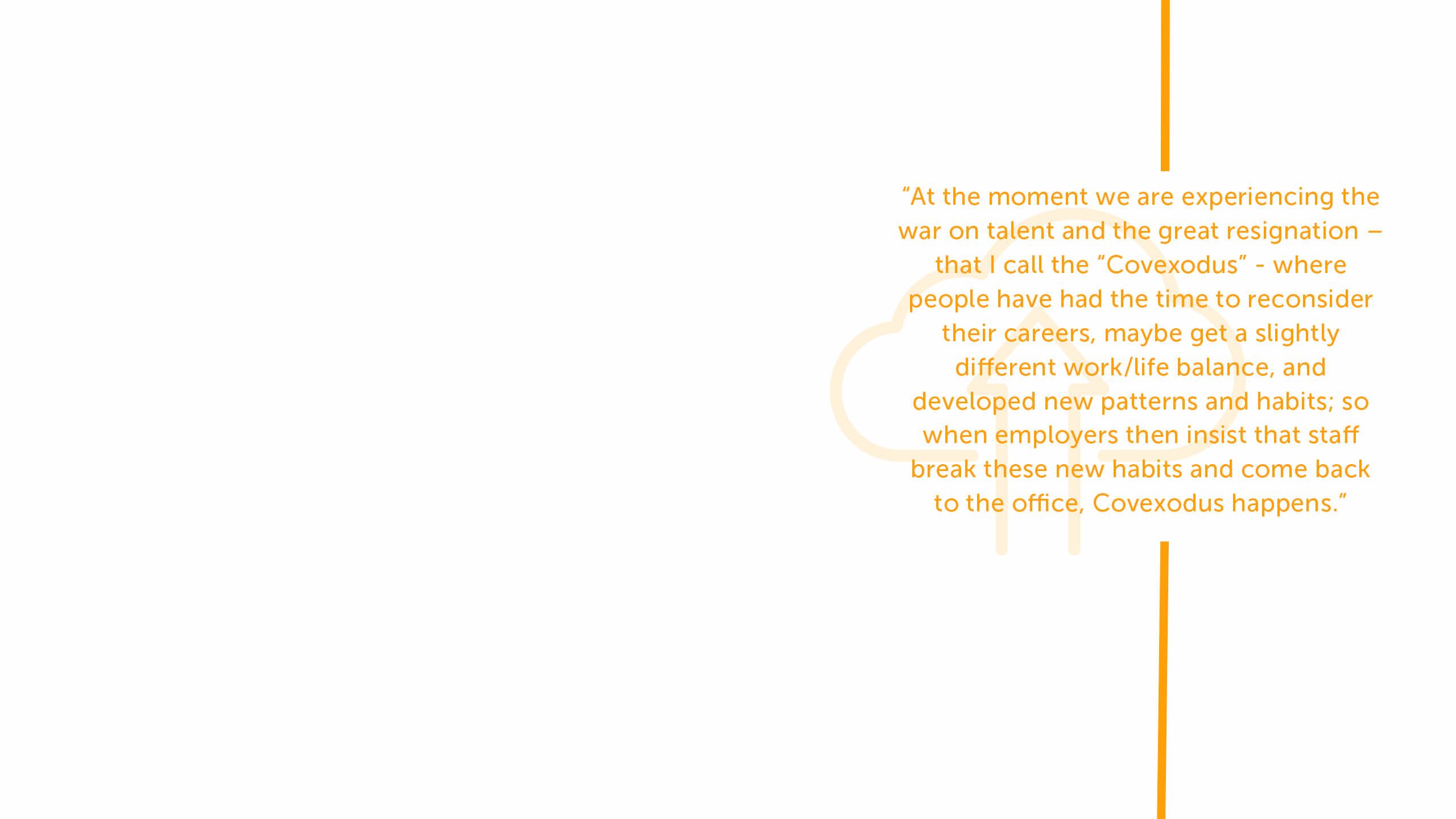
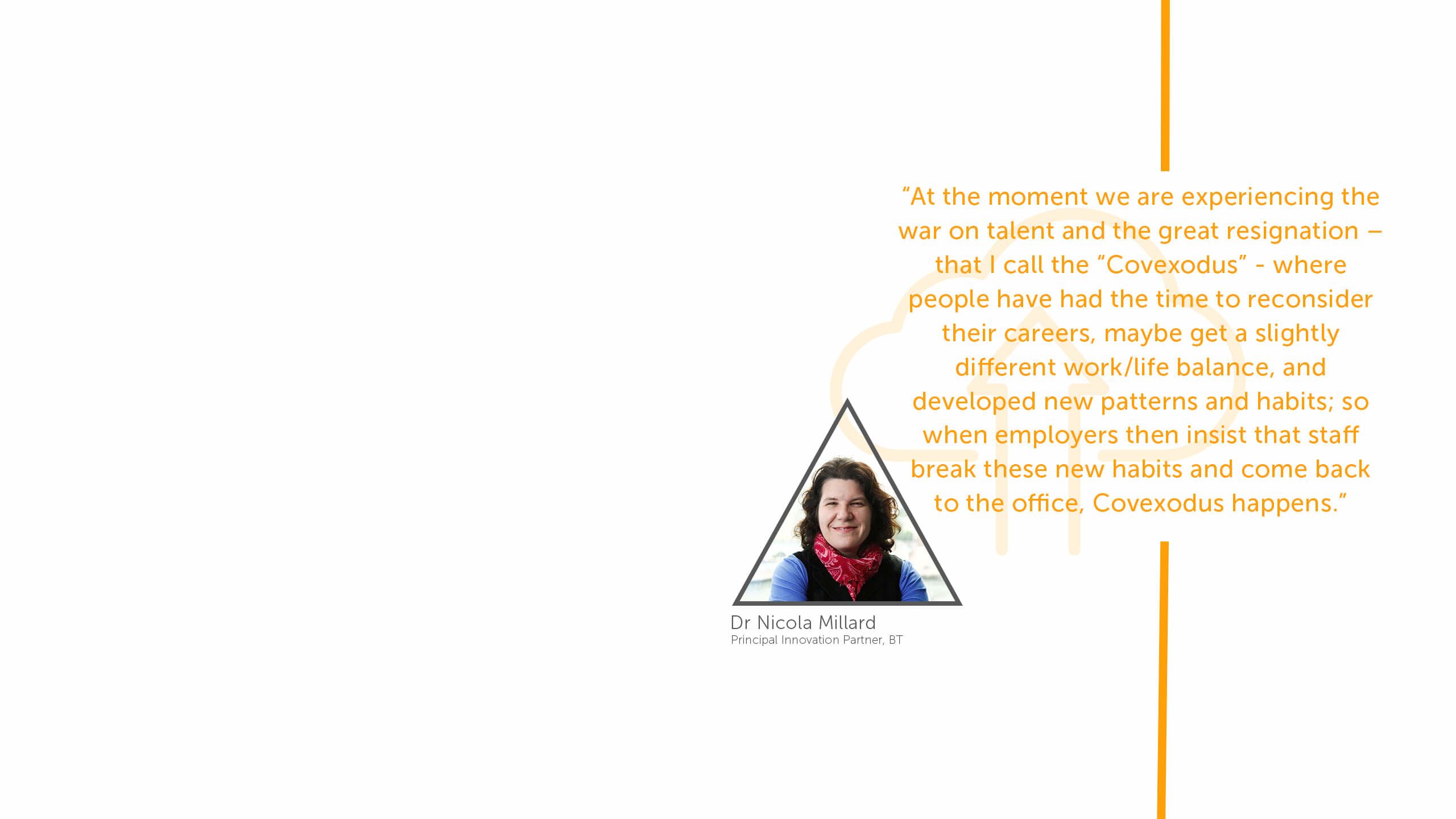


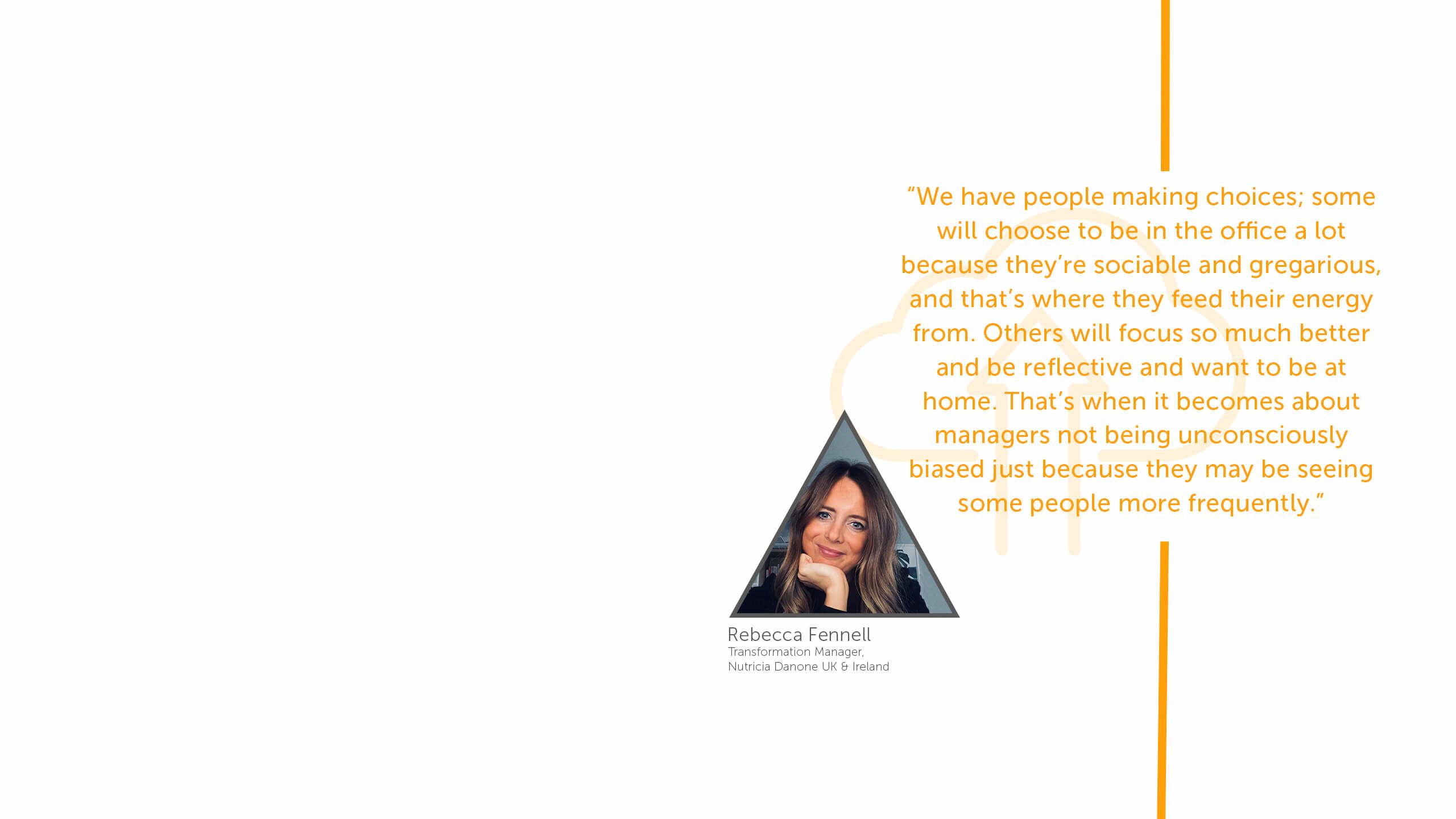

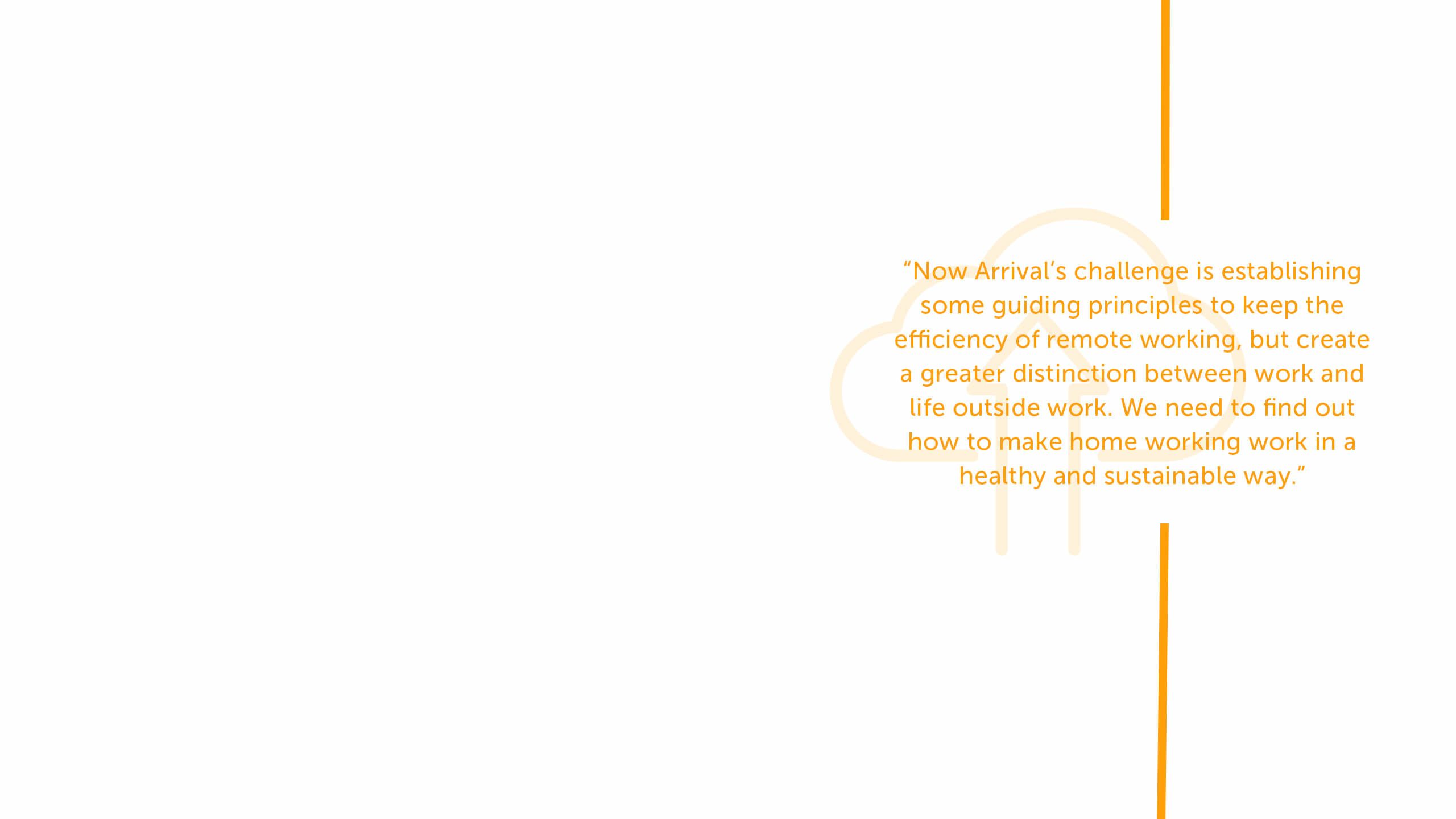
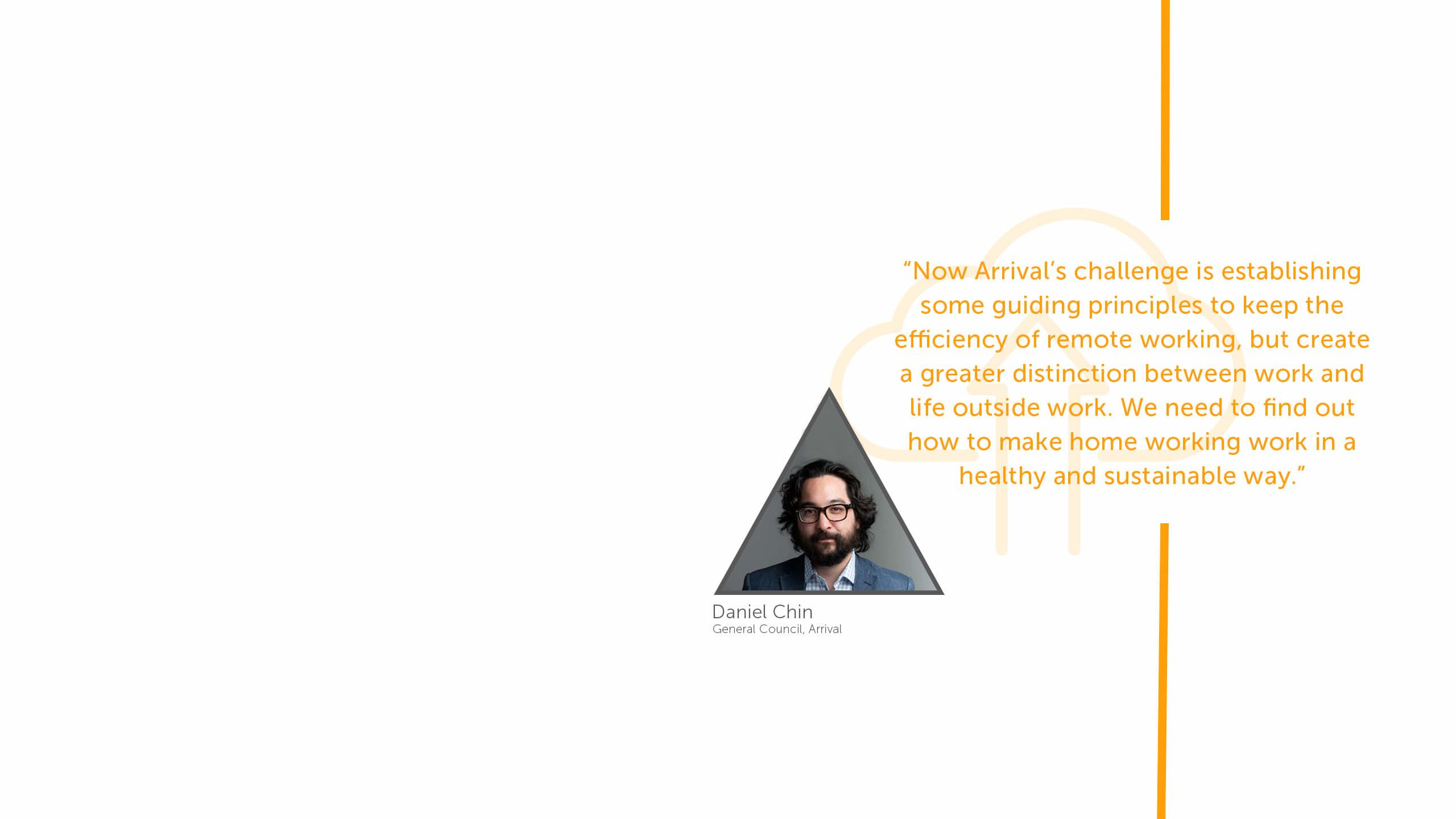


As a public healthcare crisis, the pandemic affected all workforces. At this critical time, HR teams rose to the challenge: they supported, strategised, planned, implemented measures and advised CEOs as issues in the workforce came to the fore.
Playing this key role has changed top managers’ perceptions of HR. The expertise and skills were always there; now, so is the credibility. Richard Roberts, Culture, Employee Engagement and HR Consultant at enRich, formerly People Director at Pure Planet comments: “The credibility of HR teams has significantly improved over the last two years as their skills and expertise are now key to business success. Senior management are waking up to the fact that HR isn’t a partner to the business – it is very much integral to the business!”
“The old-fashioned perception is of HR as a function that just takes money off the bottom line; the function has now had the opportunity to prove just how wrong that view is. HR just delivered and delivered over the last two years and got things done, and created licence in the board meeting to share an opinion on any subject and be listened to.”
James Goulding of PPHE Hotel Group agrees: “Without a doubt, there’s been a lot more interest and engagement from our board on people issues. They are interested in seeing the metrics; in knowing what the HR function is doing about the challenges; and hearing the voice of the workforce”.
Aside from dealing with the current agenda issues such as flexible working, wellbeing and ED&I, companies are also coming to the realisation that a motivated and trusted workforce have a direct impact on the bottom line – and HR is the function to deliver that. FDs and CFOs have always had this level of credibility because those functions are measured by monetary terms. money. If businesses are now starting to be measured on both the credibility of their employee engagement and their employee brand, more than they ever have been previously, this will be a central part to the success of any business moving forward.
“For me, that’s where the heartland of HR is: it’s about being an integral part of the business with the expertise in engaging and motivating diverse teams; communicating a vision that aligns people; and creating trust within the organisation.”
The last two years have understandably been hugely stressful for HR professionals. Louise Nuttall, Head of HR at BCS, The Chartered Institute for IT, The Chartered Institute for HR, comments: “In the last 18 months, HR teams have either been made or broken. We’ve had to flex to serve as many needs as possible, as quickly as possible. Now is the time to settle down, assess, take a breath and think about the future strategically.”
On the horizon: HR automation and tech
One of the universal themes across sectors and company sizes is the pressing need for HR automation. Some of the pressure on HR to provide seamless and immediate service is stemming from ‘reflected’ service standards set by providers, such as banks. The expectation of swift, if not immediate, service means an implied, or even explicit, service level agreement between staff and the HR function. Whilst we are likely to see real tension between this on-demand service and the right to switch off, the introduction of technology to streamline services will undoubtedly relieve the pressure.
Many HR teams are currently assessing what can be flipped from manual to automated, and are looking into on-demand functionality, e.g. chat bots that would allow staff to book holiday using their phones, check how much annual leave they have, access their payslips and so on. It’s the HR service that is accessible to anyone, anytime, anywhere.
Will HR solely be about cloud tech and chat bots then? Not at all. What this means is a shift of focus to longer-term strategic thinking; understanding what new skills the organisation might need in the future and embarking on that journey of retraining so that companies are able to build agile pools of talent.
“We want to proceed down the road of automation with a degree of caution, maintain the balance between tech and people, and make sure we don’t lose the personal element of HR. HR is often a shoulder to cry on, or a confidential thinking partner, and that’s an important part of our role to maintain, as well as being the strategic thinking partner.”
Shrinking down and simplifying policies
Another common theme which is inextricably linked to the notion of trust within an organisation is HR stepping away from reliance on policies.
Some HR directors have described wanting to be more proactive and less reactive in terms of employee needs, and to pre-empt the challenges that managers are facing. This, they say, requires policies to be condensed with a renewed focus on offering guidance, frameworks, and/or suggestions to enable managers to be at their best. In a business where trust underpins the employer/employee relationship, relying on policies is simply no longer necessary.
The challenge here is preserving the trust that was (at least in part) borne out by extreme circumstances. With the pandemic behind us, what can organisations do to maintain that level of trust, pace, interest and collegiate ability? Businesses can incorporate these into their practices and continue to remind themselves of the the agility and human connection that emerged from the crisis.
HR: the agent for change
The pandemic by necessity taught some businesses to operate on the fly. Faced with the need to make decisions that affected the whole workforce, including the need to protect the workforce, organisations have gained confidence to dispose of grand processes and bring about change in a more agile way, coupled with a human touch.
“For young HR professionals this has been an unorthodox environment to learn in – the question is, has this experience given them what they need to be really good HR leaders in the future, or are they actually going to be much, much better because they have learnt that they do not have to be constrained, they can just talk to people and get stuff done?”
Some of this momentum can now be used to deliver further change that businesses need. There’s more licence now to bring a team of people together and talk about change. It’s still a consultation, but it’s not formal – it’s human. This kind of approach takes courage. Line managers are encouraged to stop hiding behind HR, move away from the old, scripted approach, and simply see how people feel.
This change applies to skill sets too. At Danone, Rebecca Fennell, Transformation Manager, comments: “There is a real and emerging need to bring certain skill sets like change management and transformation out of specialist roles, and weave them into the organisation and its managers, so that we can be much more responsive and adaptive to change and build change resilience in the organisation. We need to look at change resilience as a core competence that we take into account when recruiting”.
HR are of course looking to work in harmony with other business services when it comes to change.
“At Arrival, the initiatives that HR push through are done in collaboration with legal, finance and the senior management, so they are quite embedded. The head of talent has a seat at the table for all of the serious discussions about the future of the business, not just people-related but all strategic decisions”.
Legislative changes
When it comes to current HR challenges, employment law is arguably on the back foot. With the recent profound changes to the world of work, legislation is playing catch up. However, one question posed by the HR profession is: do we really need to legislate for everything? Or has the time come to trust employers to do the right thing?
Nevertheless, some changes to the law are anticipated and these are worth flagging.
CIPD is lobbying the Government to make the right to request flexible working available from day one. There is not much doubt that this change is going to happen. When it does, organisations that have been lagging behind in this area will be forced to think differently about their new workforce.
There is some talk about the concept of the right to disconnect and how we make sure that employees know they have that right. HR directors question what that looks like versus the trust culture that many wish to maintain. Can the right to disconnect – closely linked to wellbeing – be achieved on trust culture alone or do we need more policies to support employees? Health and safety at work is also evolving with many employers expressing concerns about employees’ home setups.
Making work work
Let’s face it: the global challenges of modern work – and the future of work – are bigger than HR.
Dr Nicola Millard explains: “Right now there is too much discussion of working models and details such as about how many days employees should be in an office. In my opinion, it is kind of irrelevant because the real question is “how do we make work work?”.
“There are three things that we need to make work work for: productivity, people and the planet.
“With productivity, we have got to define what on earth productivity is in the first place. This is really difficult, particularly for knowledge jobs. Most of the conventional productivity measures were derived from the industrial age where we had factories and inputs and outputs. In a knowledge job, we can measure how many meetings we’ve had, how many emails we’ve sent, and how many hours we’ve sat at our laptops– but do these measures have any meaning? Productivity is in need of a big rethink”.
“In the ‘people’ part of this problem, the emphasis has started to shift very much to the employee experience piece. In the hybrid conversation, digital-first and office-first hybrids have digital as the common ground. and so the conversation should really be about how you get the digital employee experience right to connect people, wherever they happen to be.
“In the ‘planet’ part, with COP26 in recent memory, the opportunity is to look at where we can reduce carbon. Should we get in our cars as much? Should we get on planes as much? What can we do, when working from home, to reduce our home energy consumption and make that greener?”.
Clearly, these big questions aren’t for HR to solve alone. It’s going to take academics, big business leaders, top management, and all support functions pulling together in one direction to set precedents and examples to follow.
HR, with its proven value and its hard-won seat at the table, is in a better position now more than ever, to play its part.

As a public healthcare crisis, the pandemic affected all workforces. At this critical time, HR teams rose to the challenge: they supported, strategised, planned, implemented measures and advised CEOs as issues in the workforce came to the fore.
Playing this key role has changed top managers’ perceptions of HR. The expertise and skills were always there; now, so is the credibility. Richard Roberts of Pure Planet comments: “The credibility of HR teams has significantly improved over the last two years as their skills and expertise are now key to business success. Senior management are waking up to the fact that HR isn’t a partner to the business – it is very much integral to the business!”
“The old-fashioned perception is of HR as a function that just takes money off the bottom line; the function has now had the opportunity to prove just how wrong that view is. HR just delivered and delivered over the last two years and got things done, and created licence in the board meeting to share an opinion on any subject and be listened to.”
James Goulding of PPHE Hotel Group agrees: “Without a doubt, there’s been a lot more interest and engagement from our board on people issues. They are interested in seeing the metrics; in knowing what the HR function is doing about the challenges; and hearing the voice of the workforce”.
Aside from dealing with the current agenda issues such as flexible working, wellbeing and ED&I, companies are also coming to the realisation that a motivated and trusted workforce have a direct impact on the bottom line – and HR is the function to deliver that. FDs and CFOs have always had this level of credibility because those functions are measured by monetary terms. money. If businesses are now starting to be measured on both the credibility of their employee engagement and their employee brand, more than they ever have been previously, this will be a central part to the success of any business moving forward.
“For me, that’s where the heartland of HR is: it’s about being an integral part of the business with the expertise in engaging and motivating diverse teams; communicating a vision that aligns people; and creating trust within the organisation.”
The last two years have understandably been hugely stressful for HR professionals. Louise Nuttall, Head of HR at BCS, The Chartered Institute for IT, comments: “In the last 18 months, HR teams have either been made or broken. We’ve had to flex to serve as many needs as possible, as quickly as possible. Now is the time to settle down, assess, take a breath and think about the future strategically.”
On the horizon: HR automation and tech
One of the universal themes across sectors and company sizes is the pressing need for HR automation. Some of the pressure on HR to provide seamless and immediate service is stemming from ‘reflected’ service standards set by providers, such as banks. The expectation of swift, if not immediate, service means an implied, or even explicit, service level agreement between staff and the HR function. Whilst we are likely to see real tension between this on-demand service and the right to switch off, the introduction of technology to streamline services will undoubtedly relieve the pressure.
Many HR teams are currently assessing what can be flipped from manual to automated, and are looking into on-demand functionality, e.g. chat bots that would allow staff to book holiday using their phones, check how much annual leave they have, access their payslips and so on. It’s the HR service that is accessible to anyone, anytime, anywhere.
Will HR solely be about cloud tech and chat bots then? Not at all. What this means is a shift of focus to longer-term strategic thinking; understanding what new skills the organisation might need in the future and embarking on that journey of retraining so that companies are able to build agile pools of talent.
“We want to proceed down the road of automation with a degree of caution, maintain the balance between tech and people, and make sure we don’t lose the personal element of HR. HR is often a shoulder to cry on, or a confidential thinking partner, and that’s an important part of our role to maintain, as well as being the strategic thinking partner.”
Shrinking down and simplifying policies
Another common theme which is inextricably linked to the notion of trust within an organisation is HR stepping away from reliance on policies.
Some HR directors have described wanting to be more proactive and less reactive in terms of employee needs, and to pre-empt the challenges that managers are facing. This, they say, requires policies to be condensed with a renewed focus on offering guidance, frameworks, and/or suggestions to enable managers to be at their best. In a business where trust underpins the employer/employee relationship, relying on policies is simply no longer necessary.
The challenge here is preserving the trust that was (at least in part) borne out by extreme circumstances. With the pandemic behind us, what can organisations do to maintain that level of trust, pace, interest and collegiate ability? Businesses can incorporate these into their practices and continue to remind themselves of the the agility and human connection that emerged from the crisis.
HR: the agent for change
The pandemic by necessity taught some businesses to operate on the fly. Faced with the need to make decisions that affected the whole workforce, including the need to protect the workforce, organisations have gained confidence to dispose of grand processes and bring about change in a more agile way, coupled with a human touch.
“For young HR professionals this has been an unorthodox environment to learn in – the question is, has this experience given them what they need to be really good HR leaders in the future, or are they actually going to be much, much better because they have learnt that they do not have to be constrained, they can just talk to people and get stuff done?”
Some of this momentum can now be used to deliver further change that businesses need. There’s more licence now to bring a team of people together and talk about change. It’s still a consultation, but it’s not formal – it’s human. This kind of approach takes courage. Line managers are encouraged to stop hiding behind HR, move away from the old, scripted approach, and simply see how people feel.
This change applies to skill sets too. At Danone, Transformation Manager, Rebecca Fennell comments: “There is a real and emerging need to bring certain skill sets like change management and transformation out of specialist roles, and weave them into the organisation and its managers, so that we can be much more responsive and adaptive to change and build change resilience in the organisation. We need to look at change resilience as a core competence that we take into account when recruiting”.
HR are of course looking to work in harmony with other business services when it comes to change.
“At Arrival, the initiatives that HR push through are done in collaboration with legal, finance and the senior management, so they are quite embedded. The head of talent has a seat at the table for all of the serious discussions about the future of the business, not just people-related but all strategic decisions”.
Legislative changes
When it comes to current HR challenges, employment law is arguably on the back foot. With the recent profound changes to the world of work, legislation is playing catch up. However, one question posed by the HR profession is: do we really need to legislate for everything? Or has the time come to trust employers to do the right thing?
Nevertheless, some changes to the law are anticipated and these are worth flagging.
CIPD is lobbying the Government to make the right to request flexible working available from day one. There is not much doubt that this change is going to happen. When it does, organisations that have been lagging behind in this area will be forced to think differently about their new workforce.
There is some talk about the concept of the right to disconnect and how we make sure that employees know they have that right. HR directors question what that looks like versus the trust culture that many wish to maintain. Can the right to disconnect – closely linked to wellbeing – be achieved on trust culture alone or do we need more policies to support employees? Health and safety at work is also evolving with many employers expressing concerns about employees’ home setups.
Making work work
Let’s face it: the global challenges of modern work – and the future of work – are bigger than HR.
Dr Nicola Millard explains: “Right now there is too much discussion of working models and details such as about how many days employees should be in an office. In my opinion, it is kind of irrelevant because the real question is “how do we make work work?”.
“There are three things that we need to make work work for: productivity, people and the planet.
“With productivity, we have got to define what on earth productivity is in the first place. This is really difficult, particularly for knowledge jobs. Most of the conventional productivity measures were derived from the industrial age where we had factories and inputs and outputs. In a knowledge job, we can measure how many meetings we’ve had, how many emails we’ve sent, and how many hours we’ve sat at our laptops– but do these measures have any meaning? Productivity is in need of a big rethink”.
“In the ‘people’ part of this problem, the emphasis has started to shift very much to the employee experience piece. In the hybrid conversation, digital-first and office-first hybrids have digital as the common ground. and so the conversation should really be about how you get the digital employee experience right to connect people, wherever they happen to be.
“In the ‘planet’ part, with COP26 in recent memory, the opportunity is to look at where we can reduce carbon. Should we get in our cars as much? Should we get on planes as much? What can we do, when working from home, to reduce our home energy consumption and make that greener?”.
Clearly, these big questions aren’t for HR to solve alone. It’s going to take academics, big business leaders, top management, and all support functions pulling together in one direction to set precedents and examples to follow.
HR, with its proven value and its hard-won seat at the table, is in a better position now more than ever, to play its part.

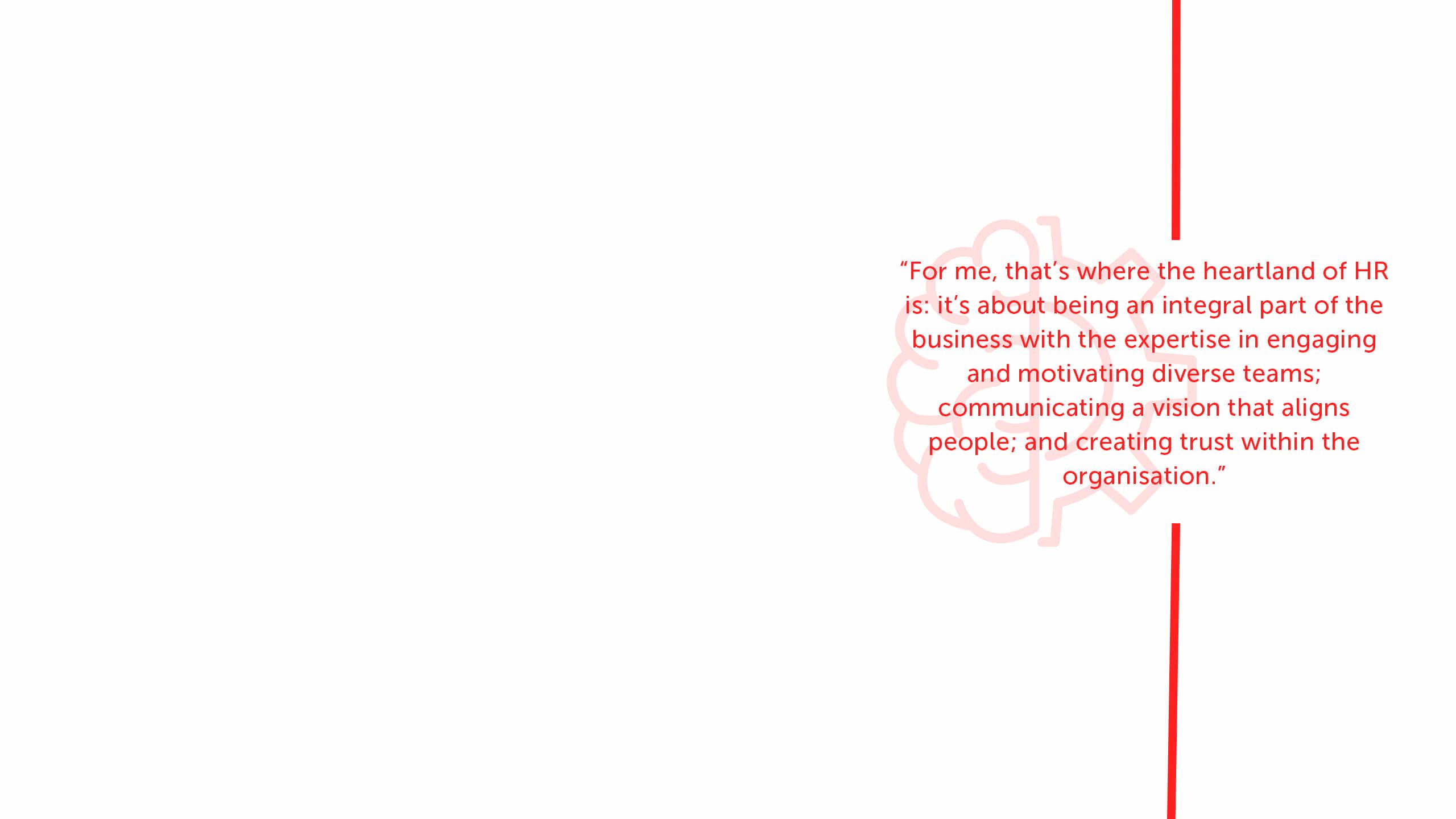
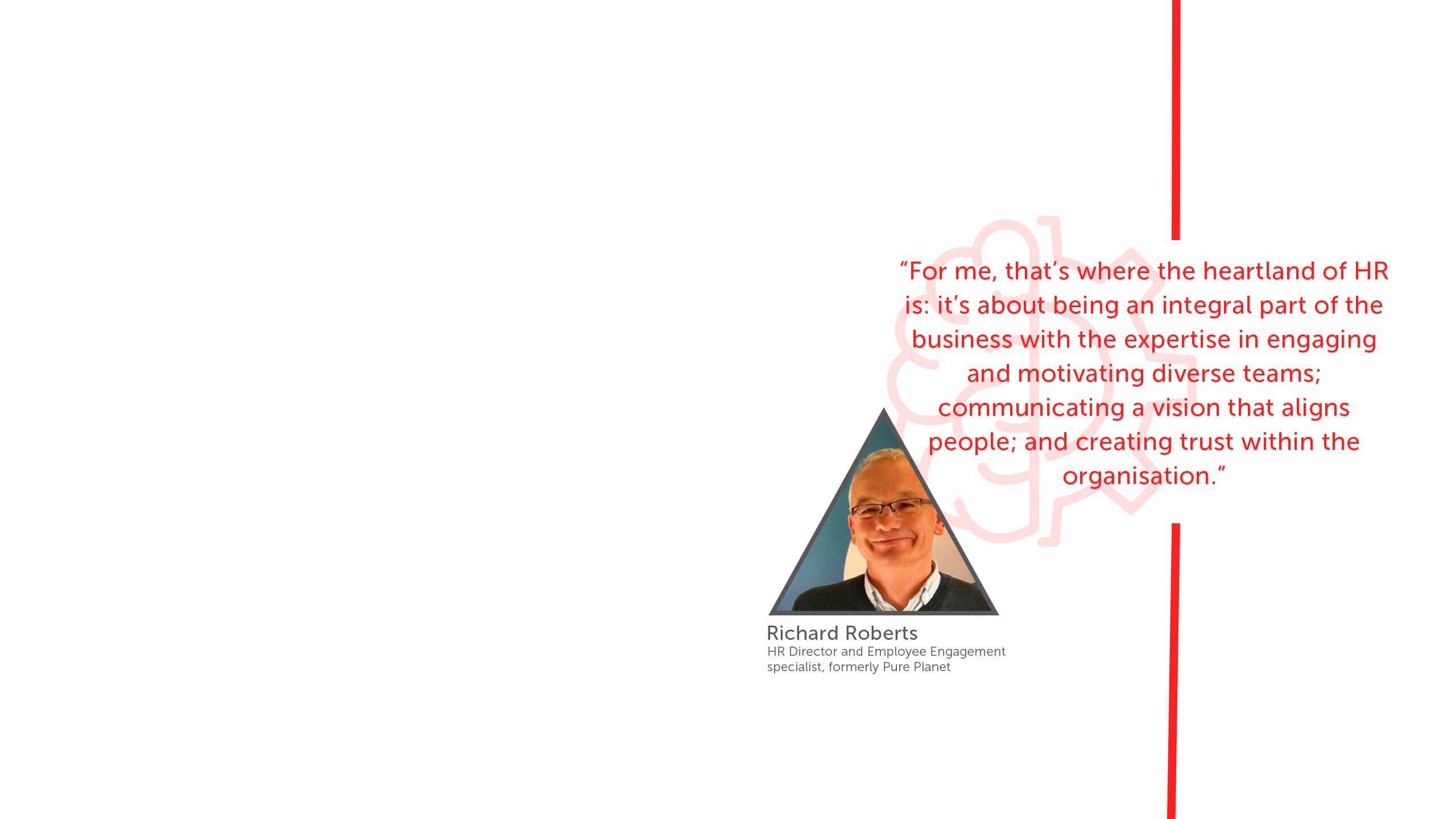


A special thank you to our expert contributors

